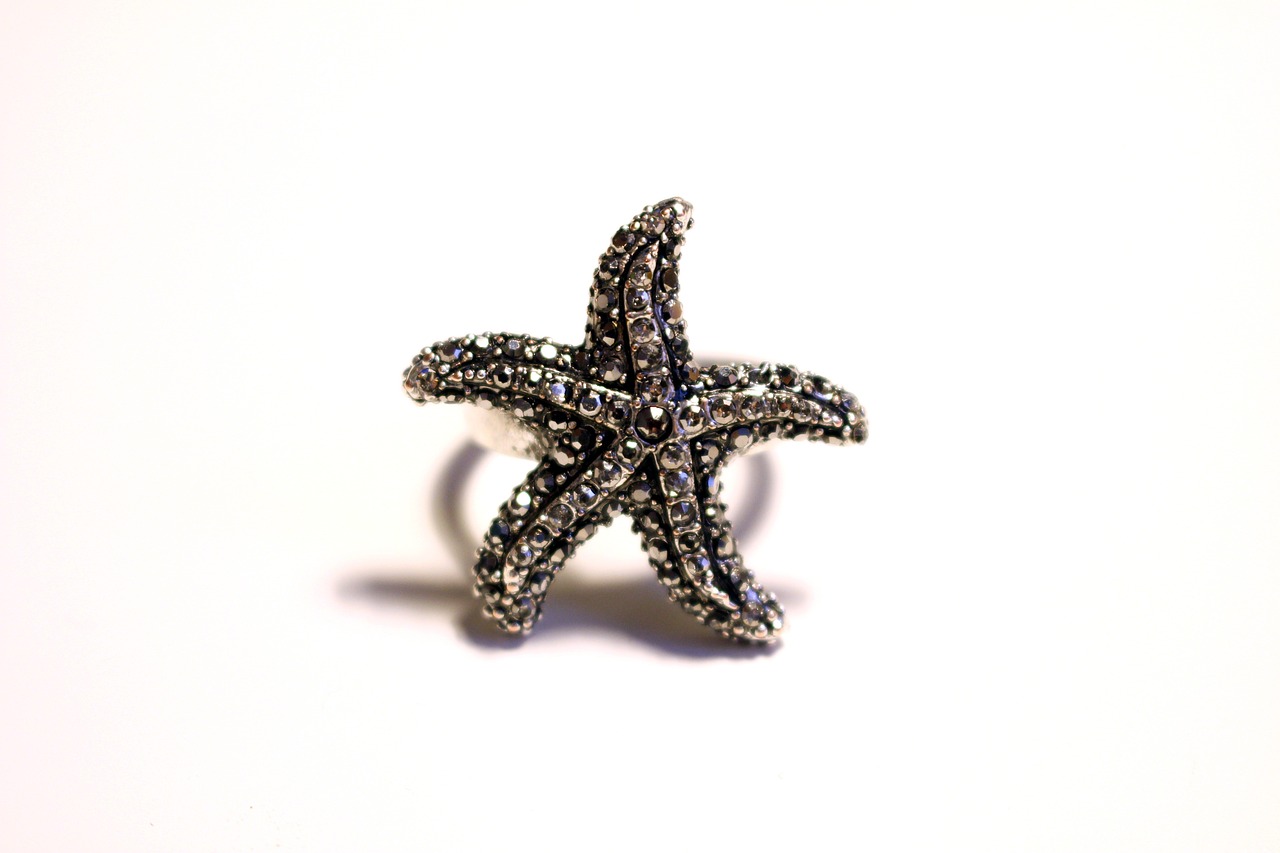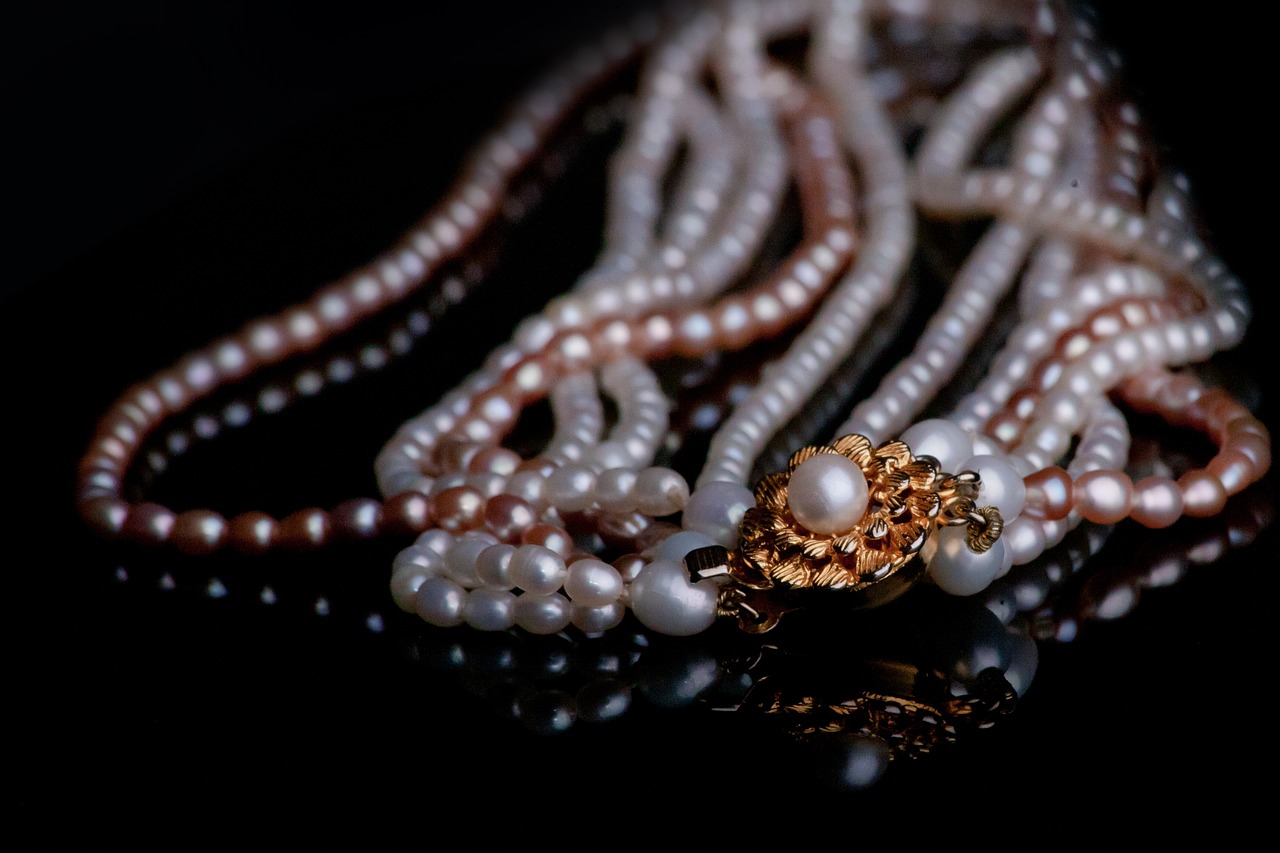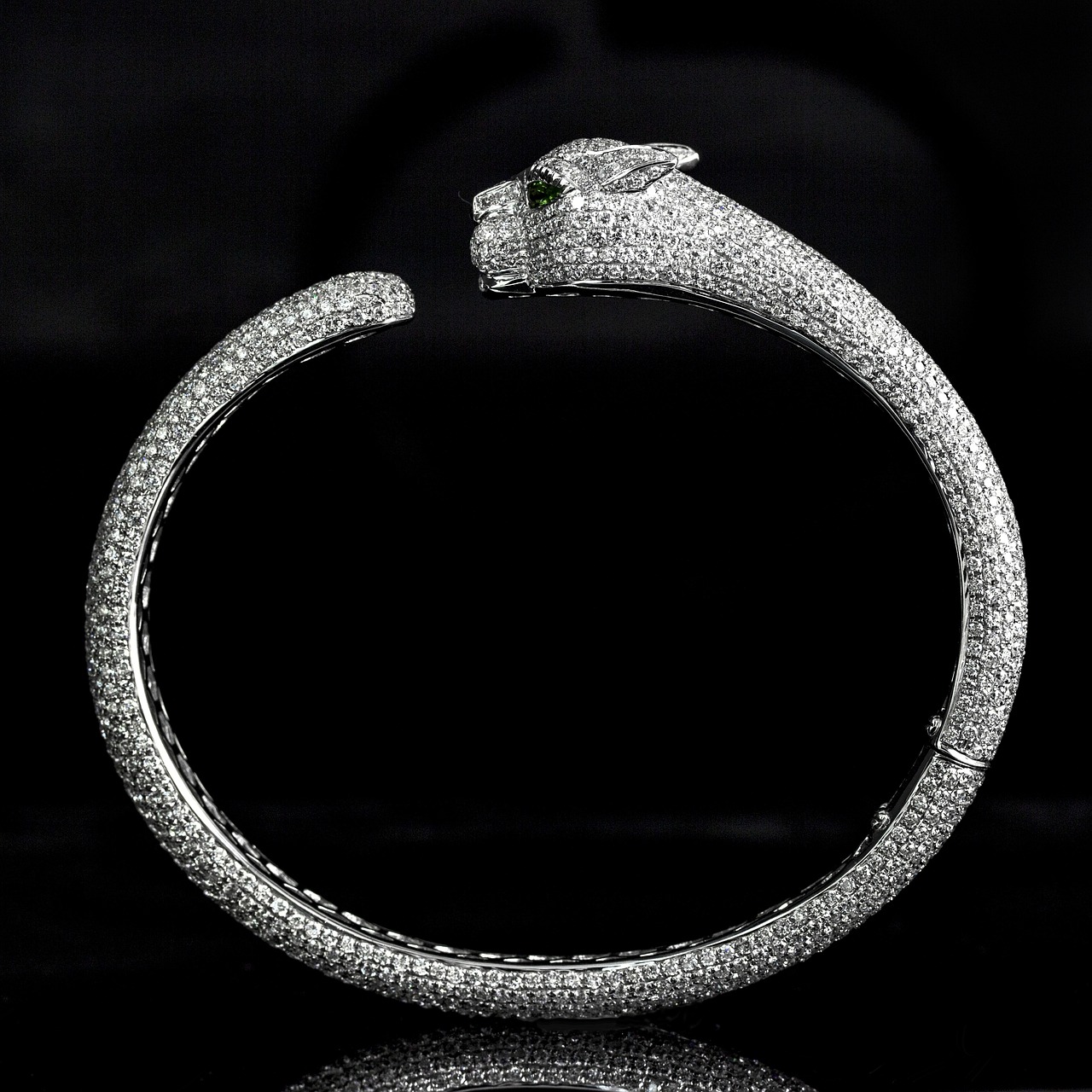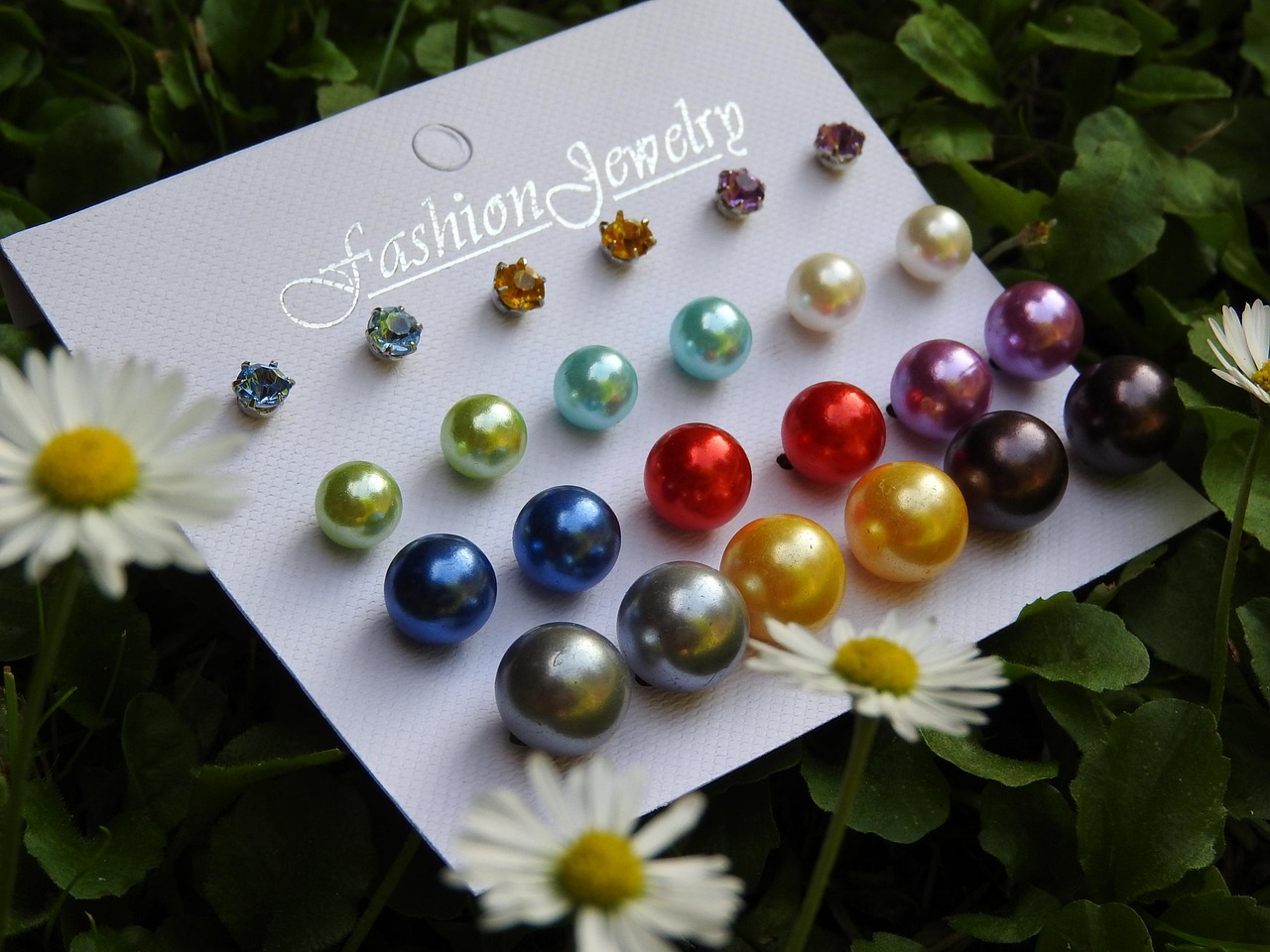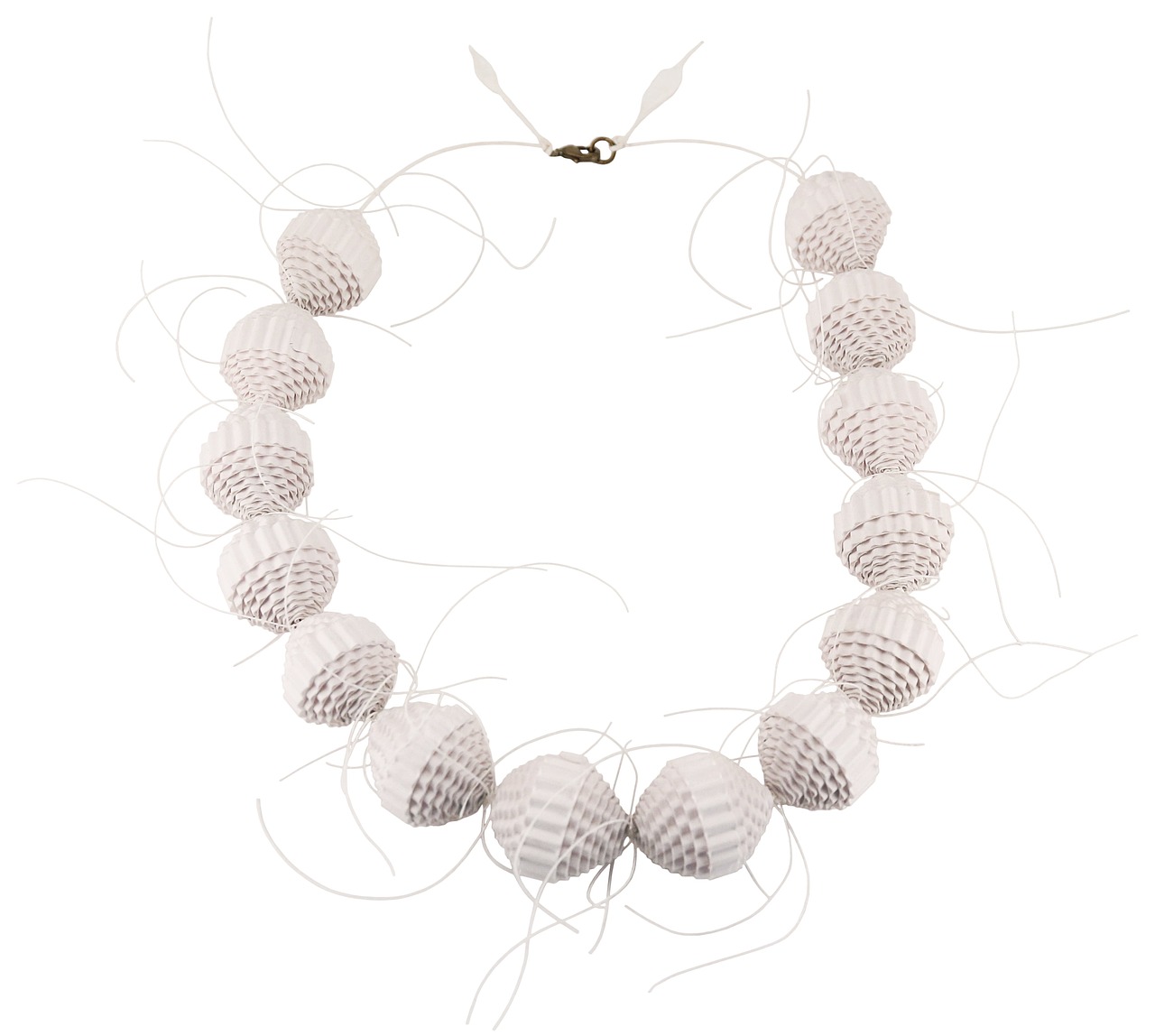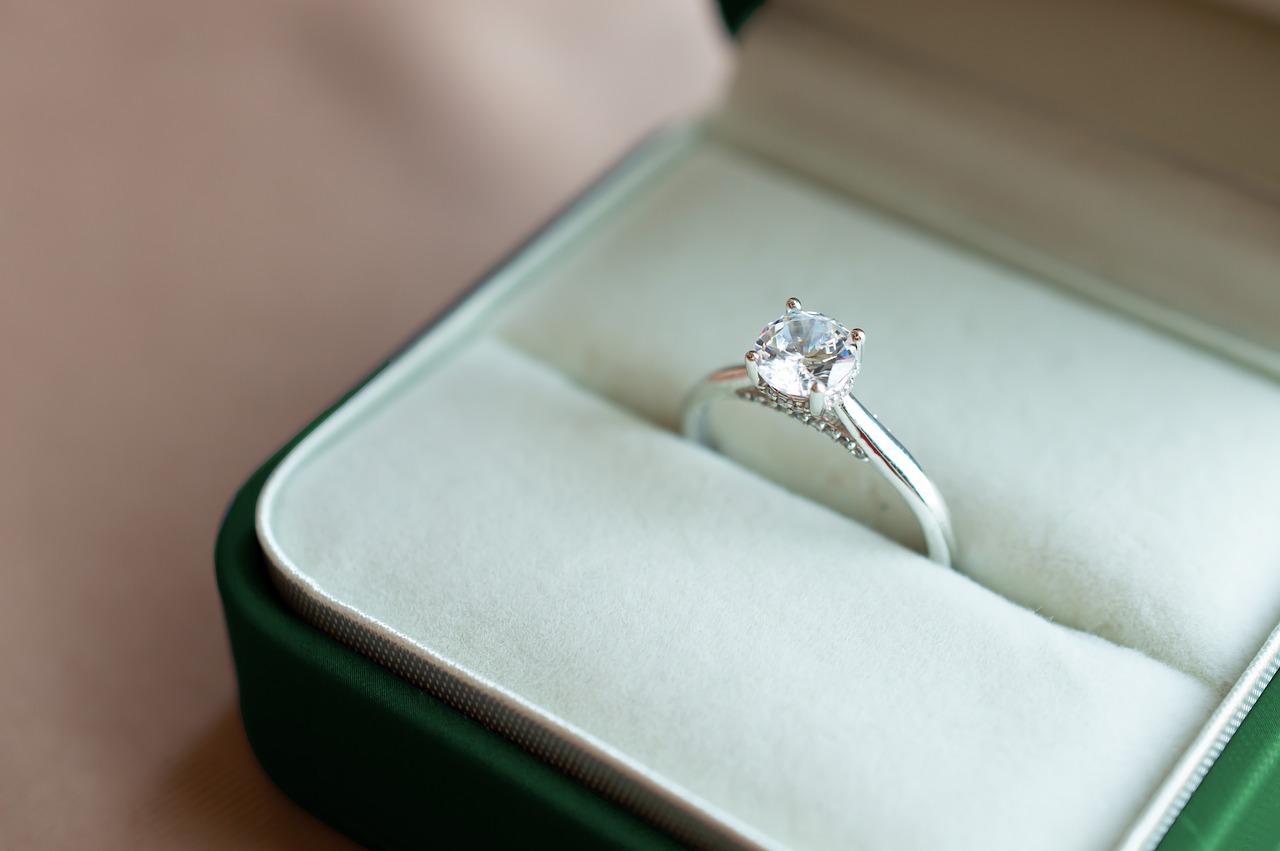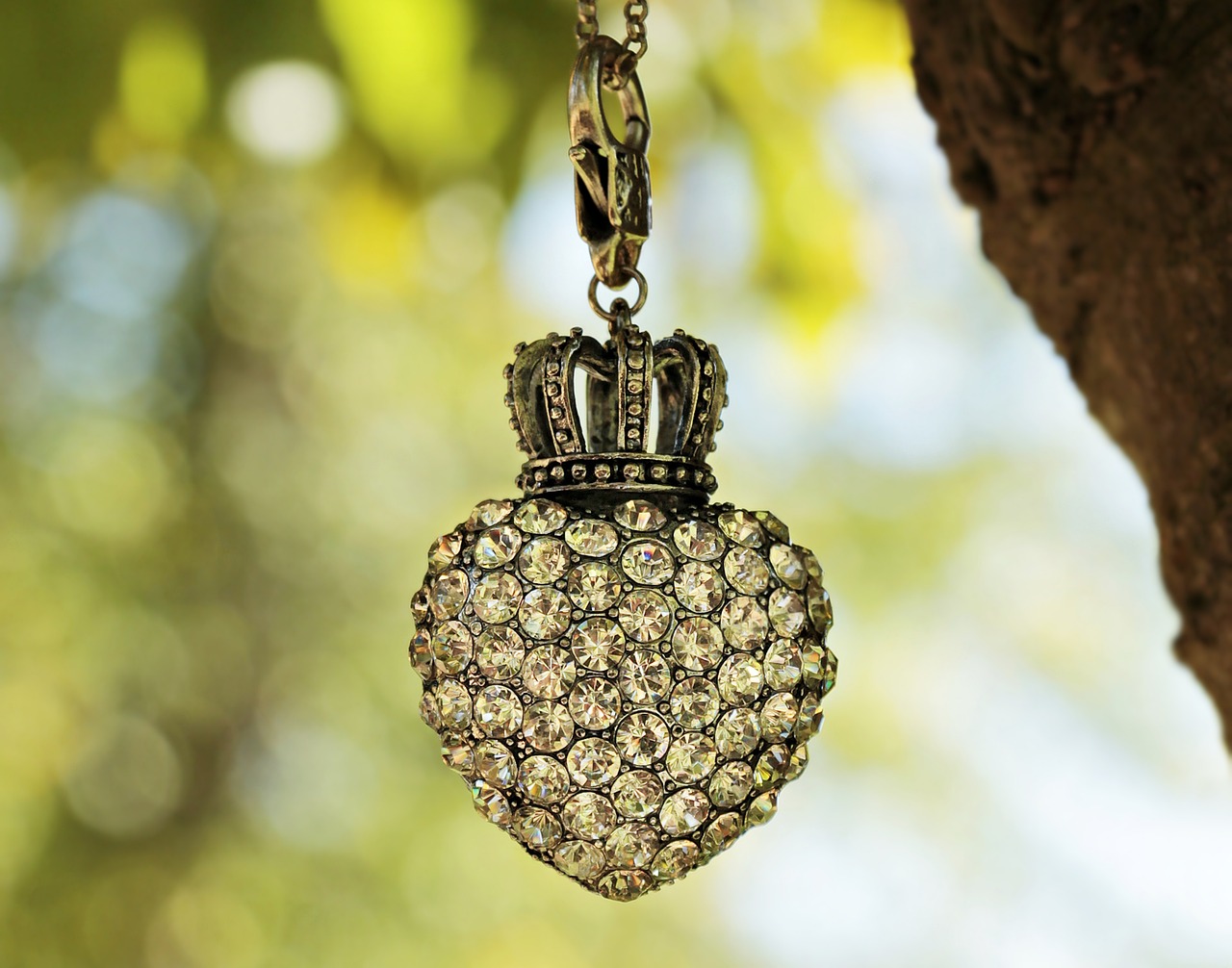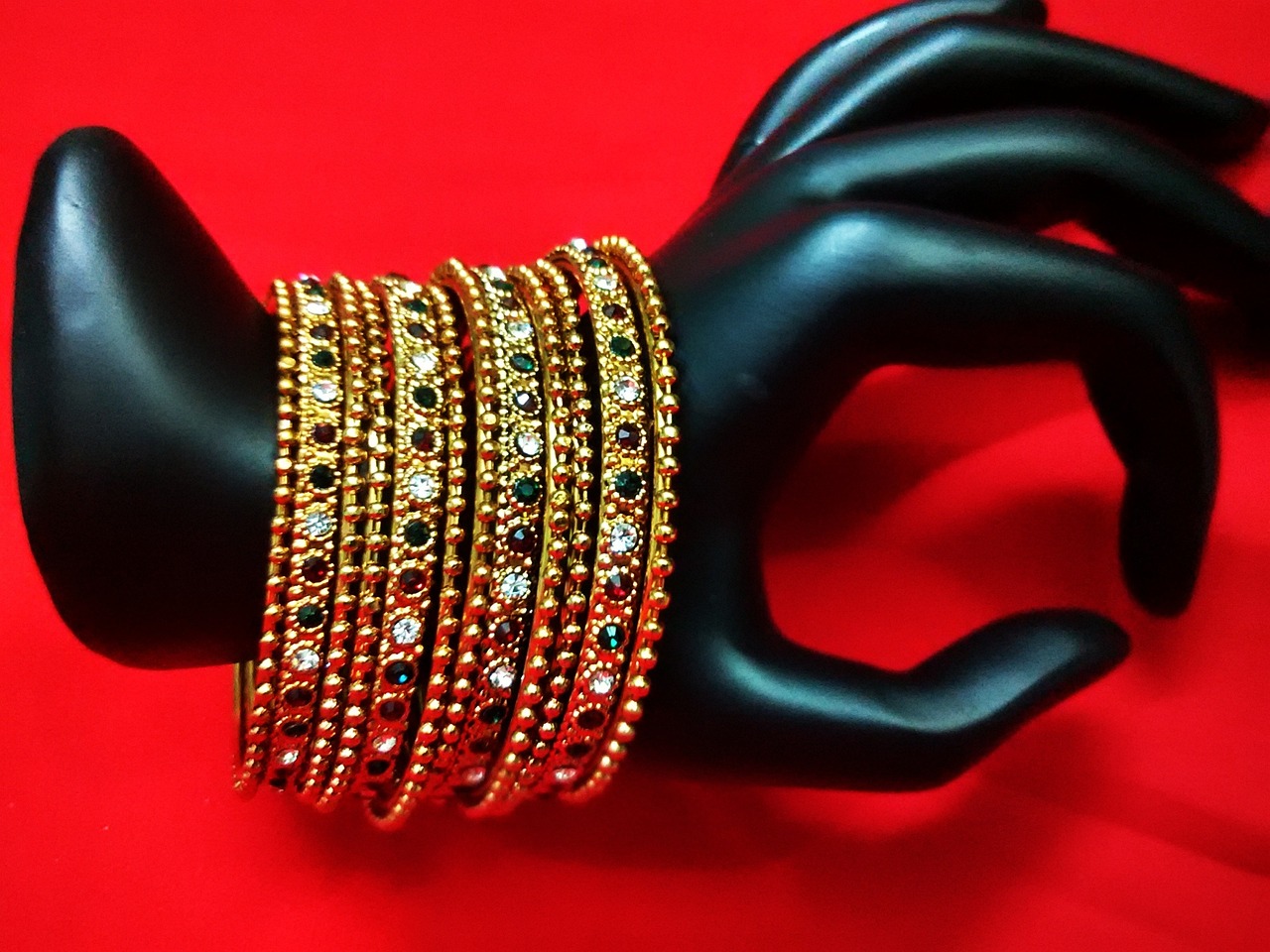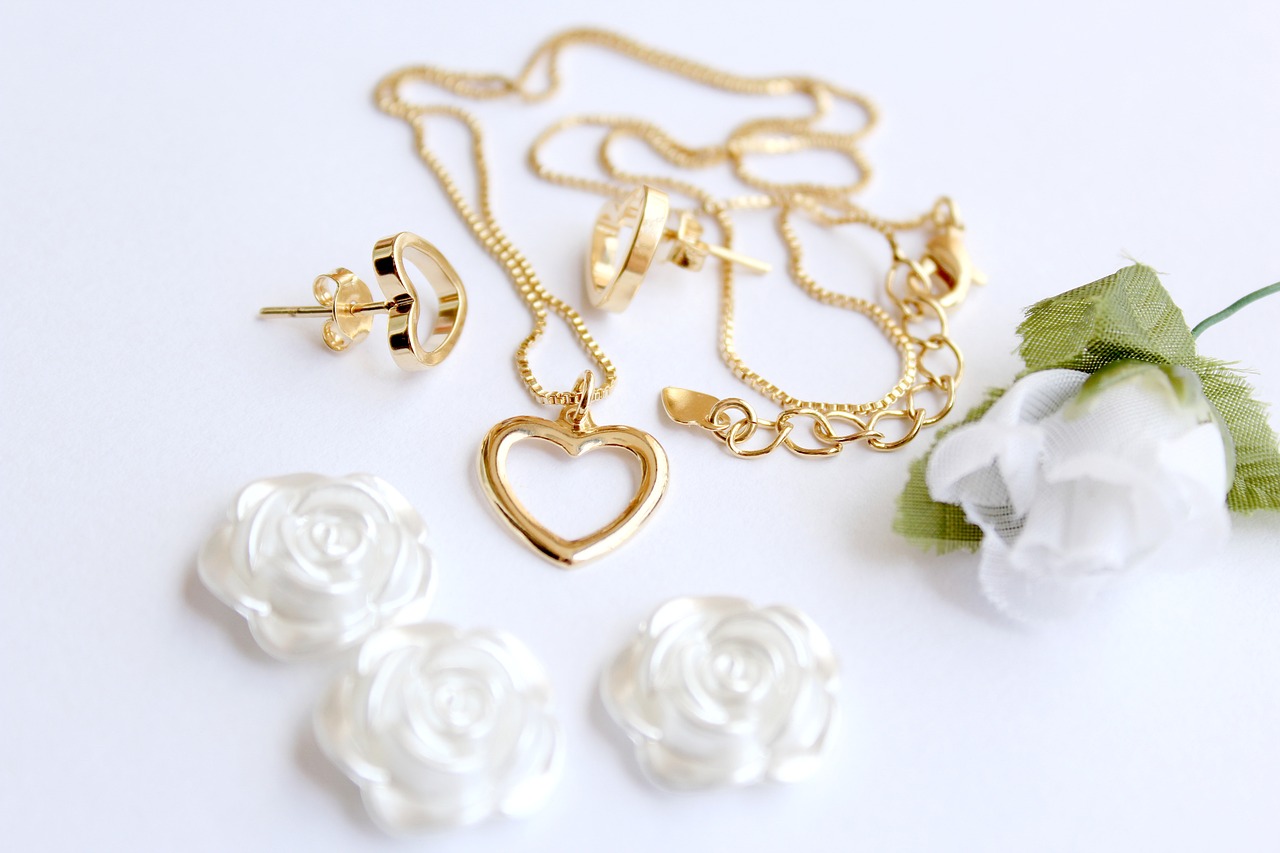This article explores effective strategies for selling old jewelry while preserving its value, ensuring you get the best return on your investment without compromising quality.
What Are the Best Ways to Sell Old Jewelry?
Understanding the various avenues for selling old jewelry can help you maximize your profits. From online platforms to local jewelers, knowing your options is crucial. Here are some popular methods:
- Online Marketplaces: Websites like eBay, Etsy, and specialized jewelry sites can reach a broad audience.
- Local Jewelers: Many jewelers buy old jewelry directly, offering immediate cash.
- Pawn Shops: Quick cash can be obtained, but offers may be lower than expected.
- Auction Houses: Ideal for high-value pieces, auction houses attract serious buyers.
How to Assess the Value of Your Jewelry?
Accurately determining the value of your jewelry is essential before selling. Factors such as material, brand, and condition play significant roles in its worth. Consider these steps:
- Research Similar Items: Look at listings for comparable pieces online to gauge market trends.
- Get a Professional Appraisal: A certified appraiser can provide a detailed valuation based on various factors.
Understanding Jewelry Appraisals
Getting a professional appraisal can provide a clear understanding of your jewelry’s market value. Appraisers consider several factors, including craftsmanship and market demand. During an appraisal, expect a thorough examination of your piece, including:
- Measurements
- Weight
- Gemstone quality
How to Choose a Reputable Appraiser?
Selecting a certified and experienced appraiser is crucial. Look for credentials, reviews, and recommendations to ensure you receive an accurate evaluation. A good appraiser should:
- Provide a written report
- Explain the valuation process
- Have experience with similar jewelry types
Where to Sell Your Jewelry for the Best Price?
Choosing the right platform to sell your jewelry can significantly impact the price you receive. Online marketplaces often offer a broader audience, while local jewelers can provide immediate cash offers. Consider these options:
- Online Marketplaces: eBay and Etsy can help reach a global audience.
- Local Jewelers: For quick sales, local jewelers can provide cash offers but may not always give the best price.
- Specialty Auction Houses: These can be an excellent option for high-value pieces, attracting serious buyers.
What to Consider When Selling Antique or Vintage Jewelry?
Selling antique or vintage jewelry requires special considerations due to its unique characteristics and market demand. Understanding these factors can help you achieve a better price. Consider:
- Identifying Antique vs. Vintage Jewelry: Antique pieces are typically over 100 years old, while vintage items are at least 20 years old.
- Market Trends: Staying updated on market trends can help you time your sale effectively.
How to Prepare Your Jewelry for Sale?
Properly preparing your jewelry for sale can enhance its appeal and value. Cleaning and presenting your pieces attractively can make a significant difference. Here are some tips:
- Cleaning and Restoring Jewelry: Carefully clean your jewelry to improve its appearance.
- Creating an Attractive Listing: High-quality photos and detailed descriptions can attract more buyers.
What Are Common Mistakes to Avoid When Selling Jewelry?
Being aware of common pitfalls can help you navigate the selling process more effectively. Avoid these mistakes:
- Underestimating Your Jewelry’s Value: Conduct thorough research to understand its true worth before selling.
- Neglecting to Compare Offers: Always seek multiple quotes to ensure you get the best deal.
How to Handle Negotiations When Selling Jewelry?
Negotiation skills can play a crucial role in achieving a satisfactory sale price. Understanding how to negotiate effectively can lead to better outcomes. Here are some strategies:
- Setting a Minimum Acceptable Price: Determine your minimum price before negotiations begin.
- Being Open to Offers: While having a minimum price is essential, being open to reasonable offers can facilitate negotiations.
What Are the Tax Implications of Selling Jewelry?
Understanding the tax implications of selling jewelry is vital for compliance and financial planning. Different regulations may apply based on your location and the sale amount:
- Capital Gains Tax Considerations: If you sell jewelry for a profit, you may be subject to capital gains tax.
- Record Keeping for Jewelry Sales: Keeping detailed records of your jewelry sales is essential for tax reporting.
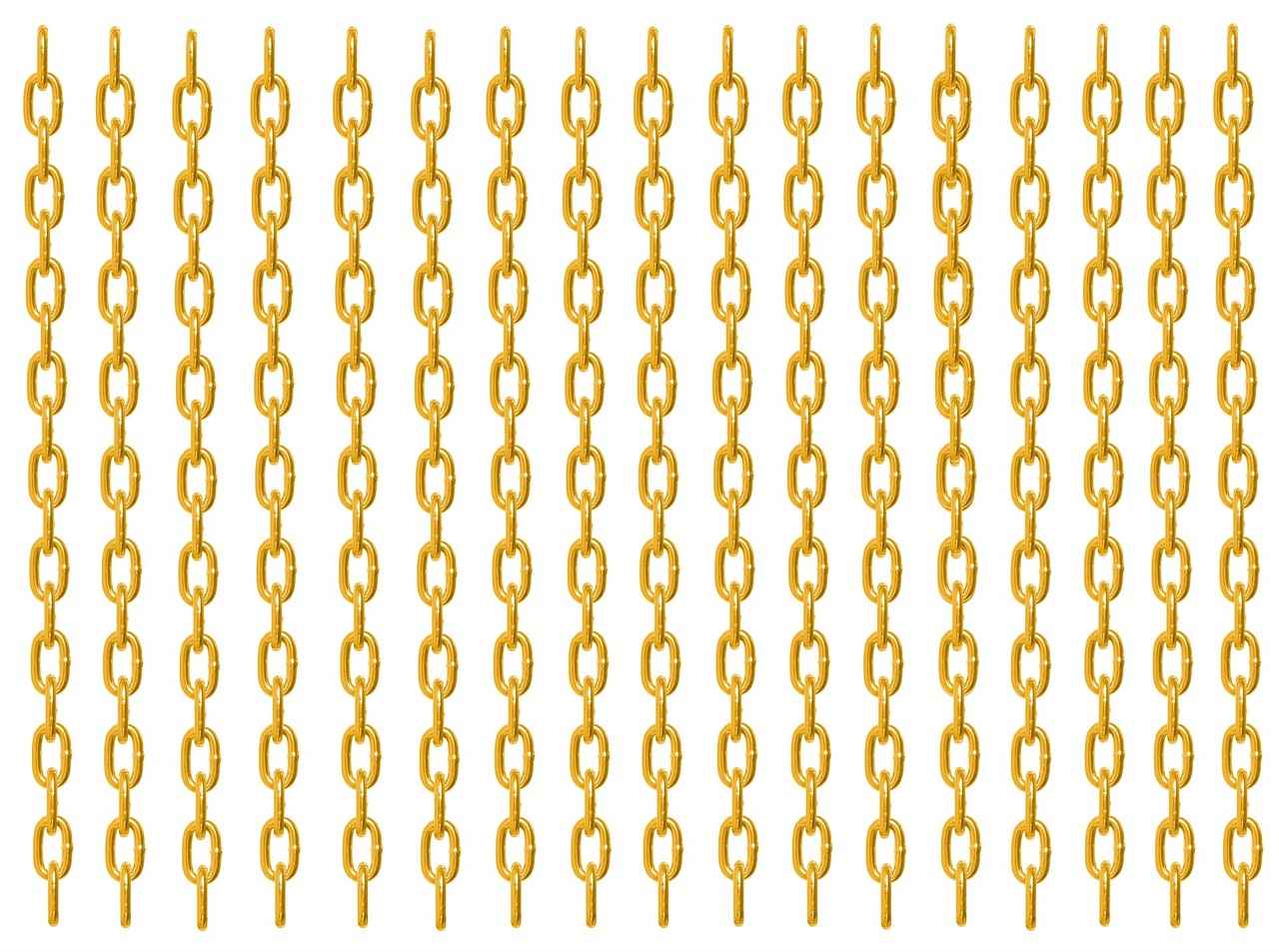
What Are the Best Ways to Sell Old Jewelry?
When it comes to selling old jewelry, understanding the various avenues available can significantly impact your profits. By exploring both online platforms and local jewelers, you can make informed decisions that maximize your returns while minimizing potential losses. Here, we delve into the best ways to sell your old jewelry, ensuring you get the best value for your pieces.
There are numerous options available when considering how to sell your old jewelry. Each avenue has its unique advantages and potential drawbacks, making it essential to evaluate them carefully.
- Online Marketplaces: Websites like eBay, Etsy, and Facebook Marketplace offer vast audiences and the potential for higher prices. However, sellers must be prepared to handle shipping and customer inquiries.
- Local Jewelers: Taking your jewelry to a local jeweler can provide immediate cash offers. Jewelers often have a keen understanding of the market and can offer fair prices, although their offers may be lower than what you could achieve online.
- Consignment Shops: Consignment shops allow you to display your jewelry for sale while the shop handles the marketing. While this can lead to a higher sale price, it may take longer to sell, and you’ll need to share a percentage of the profits.
- Auction Houses: For high-value pieces, auction houses can attract serious buyers willing to pay top dollar. Understanding the auction process and fees is crucial for maximizing your sale.
- Social Media: Platforms like Instagram and Pinterest can be effective for selling jewelry, especially if you have a following. Engaging visuals and storytelling can enhance interest and attract buyers.
Each of these options requires careful consideration. Factors such as the type of jewelry, its condition, and your urgency to sell will influence the best choice for you.
Before selling your jewelry, it’s vital to assess its value accurately. Understanding the factors that contribute to its worth can help you set realistic expectations and avoid undervaluing your items.
- Material: The type of metal and gemstones significantly impact value. Gold, platinum, and high-quality diamonds typically command higher prices.
- Brand and Designer: Jewelry from well-known brands or designers often fetches a premium due to their reputation and demand.
- Condition: The overall condition of the piece, including any wear or damage, will affect its marketability and price.
Proper preparation can enhance your jewelry’s appeal and value. Here are some practical steps to take before listing your items for sale:
- Cleaning: Clean your jewelry carefully to improve its appearance. Professional cleaning may be necessary for delicate pieces.
- Documentation: Gather any appraisals, receipts, or certificates of authenticity. This information can help substantiate your asking price.
- Attractive Presentation: When selling online, high-quality photographs and detailed descriptions are crucial. Showcase your jewelry from multiple angles to attract potential buyers.
Being aware of common selling pitfalls can help you navigate the process more effectively and ensure you receive fair compensation for your items.
- Underestimating Value: Many sellers undervalue their jewelry, leading to lower offers. Conduct thorough research to understand its true worth.
- Neglecting to Compare Offers: Failing to seek multiple quotes can result in missed opportunities for higher sales. Always compare offers to ensure you get the best deal.
In summary, understanding the best ways to sell old jewelry involves evaluating various options, accurately assessing value, and preparing your pieces for sale. By avoiding common mistakes and being strategic in your approach, you can maximize your profits and successfully turn your old jewelry into cash.
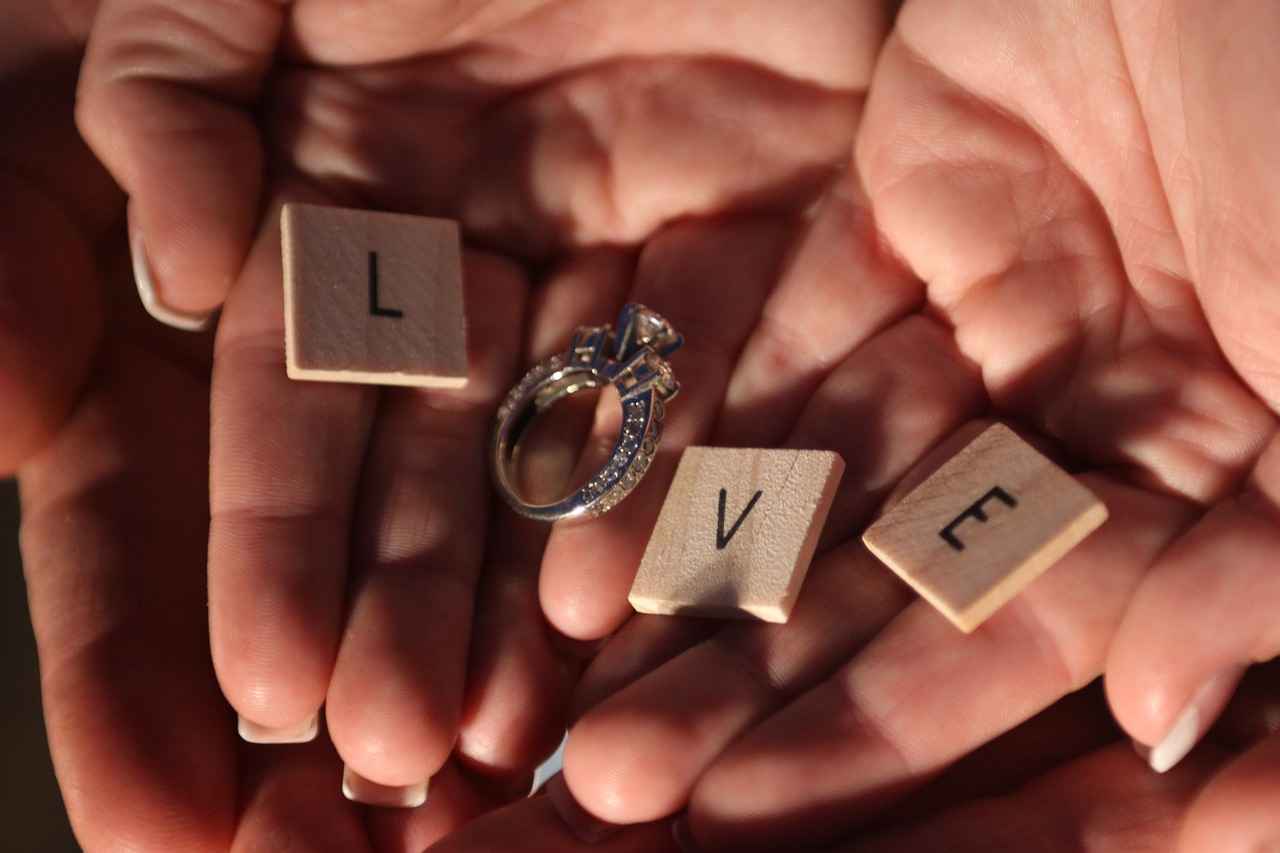
How to Assess the Value of Your Jewelry?
When it comes to selling jewelry, accurately assessing its value is a crucial first step. Without a clear understanding of what your piece is worth, you risk underselling it or missing out on potential profits. This process involves several key factors that can significantly influence the final valuation.
- Material Composition: The type of metal and gemstones used in your jewelry are primary determinants of its value. For instance, pieces made from platinum or 18k gold generally hold higher value compared to those made from silver or lower karat gold.
- Brand Reputation: Jewelry from renowned brands often commands a premium price. Brands like Tiffany & Co. or Cartier are highly sought after, and their pieces can be sold for much more than similar items from lesser-known manufacturers.
- Condition of the Item: The overall condition of your jewelry plays a significant role in its value. Well-maintained pieces with minimal signs of wear will be valued higher than those that are damaged or require repairs.
- Market Demand: Trends in the jewelry market can fluctuate. Certain styles, eras, or materials may be more popular at different times, affecting the resale value of your jewelry.
To gain a comprehensive understanding of your jewelry’s worth, consider obtaining a professional appraisal. Here’s what to expect:
- Thorough Examination: An appraiser will inspect your jewelry closely, assessing aspects such as weight, measurements, and gemstone quality.
- Documentation: You will receive a detailed report that outlines the appraiser’s findings, which can be useful for insurance or resale purposes.
- Expert Insights: Professional appraisers can provide insights into current market trends, helping you understand the potential selling price.
If hiring a professional appraiser isn’t feasible, there are several DIY methods to estimate your jewelry’s value:
- Online Research: Websites like eBay or Chrono24 can offer insights into what similar items are selling for.
- Valuation Tools: Some online platforms provide tools for evaluating jewelry based on its characteristics.
- Comparison Shopping: Check with local jewelers to see what they would offer for similar pieces, giving you a baseline for your own valuation.
Understanding the true value of your jewelry is essential for several reasons:
- Avoiding Undervaluation: Many sellers often undervalue their pieces, leading to lost profits. Knowing the actual worth can help you negotiate better offers.
- Effective Selling Strategy: An accurate valuation allows you to choose the right selling platform, whether online or through local jewelers, maximizing your potential returns.
- Informed Decisions: Knowledge of your jewelry’s value empowers you to make informed decisions regarding repairs, restorations, or even whether to keep the piece.
In conclusion, accurately assessing the value of your jewelry involves understanding various factors, from material composition to market trends. Whether you choose to seek professional appraisal or utilize DIY methods, having a clear picture of your jewelry’s worth is essential for a successful sale.
Understanding Jewelry Appraisals
When it comes to selling your jewelry, is an essential step that can significantly impact your selling experience. A professional appraisal provides you with a precise understanding of your jewelry’s market value, ensuring you are informed and prepared to make the best decisions.
A jewelry appraisal is a professional evaluation of a piece of jewelry, conducted by a certified appraiser. This process involves a thorough examination of various aspects of the piece, including:
- Craftsmanship: The skill and techniques used in creating the jewelry.
- Material Quality: The type and quality of metals and gemstones used.
- Market Demand: Current trends and demand for similar pieces in the marketplace.
- Condition: The overall state of the jewelry, including any wear and tear.
Obtaining a professional appraisal is crucial for several reasons:
- Market Value Insight: An appraisal gives you a clear understanding of your jewelry’s worth in the current market.
- Insurance Purposes: If your jewelry is lost or stolen, having an appraisal can help you claim its full value.
- Negotiation Power: Knowing the accurate value of your piece can strengthen your position when negotiating with buyers.
During an appraisal, you can expect a comprehensive evaluation. The appraiser will:
- Measure the dimensions and weight of the piece.
- Examine gemstones for quality, including cut, color, clarity, and carat weight.
- Assess the metal’s purity and craftsmanship.
- Provide a written report detailing the findings and the estimated value.
Selecting the right appraiser is crucial for an accurate valuation. Consider the following tips:
- Credentials: Look for appraisers who are certified by recognized organizations such as the American Society of Appraisers (ASA) or the International Society of Appraisers (ISA).
- Experience: Choose someone with extensive experience in jewelry appraisals.
- Reviews and Recommendations: Check online reviews and ask for recommendations from trusted sources.
If a professional appraisal isn’t feasible, you can use DIY methods to estimate your jewelry’s value:
- Online Research: Look for similar items on online marketplaces to gauge their selling prices.
- Valuation Tools: Use online calculators or guides that provide estimates based on specific criteria.
In conclusion, understanding jewelry appraisals is a vital component of selling your jewelry. By getting a professional appraisal, you empower yourself with the knowledge needed to make informed decisions, ensuring you receive a fair price for your cherished pieces.
What to Expect During an Appraisal?
When you decide to sell your jewelry, understanding the appraisal process is crucial. An appraisal provides a comprehensive evaluation of your piece, which can significantly influence the selling price. During this process, you should anticipate a meticulous examination of your jewelry, taking into account various factors that contribute to its overall value.
During an appraisal, expect a thorough examination of your piece, which includes:
- Measurements: Appraisers will measure the dimensions of your jewelry, as size can affect its value.
- Weight: The weight of the piece, particularly for gold or silver items, is a key determinant in assessing its worth.
- Gemstone Quality: If your jewelry contains gemstones, the appraiser will evaluate their quality based on criteria such as cut, clarity, color, and carat weight.
- Material Composition: The type of metal used (e.g., gold, platinum, silver) also plays a significant role in determining the overall value.
- Condition: The physical condition of the piece, including any wear and tear, can impact its appraisal value.
- Craftsmanship: High-quality craftsmanship and unique designs can enhance the value of your jewelry.
Understanding the final valuation of your jewelry is essential for several reasons:
- Setting a Fair Price: A professional appraisal helps you set a realistic price that reflects the true market value.
- Insurance Purposes: If you wish to insure your jewelry, having an accurate appraisal is crucial for determining the coverage amount.
- Negotiation Leverage: Armed with a professional appraisal, you can negotiate confidently with potential buyers.
To ensure a smooth appraisal process, consider the following tips:
- Gather Documentation: If available, bring any previous appraisals, purchase receipts, or certificates of authenticity.
- Clean Your Jewelry: Gently clean your piece to enhance its appearance, but avoid harsh chemicals that could cause damage.
- Be Honest About Condition: Disclose any repairs or alterations made to the piece to the appraiser.
Selecting a reputable appraiser is vital to ensure you receive an accurate valuation. Look for professionals with certifications from recognized organizations, and consider their experience in evaluating jewelry similar to yours. Reading reviews and asking for recommendations can also guide you in making an informed choice.
Once the appraisal is complete, you will receive a detailed report outlining the findings. This document typically includes:
- Description of the Piece: A detailed account of your jewelry’s features.
- Estimated Value: The appraised value based on current market trends.
- Photographic Documentation: Images of the piece may be included for reference.
Having this appraisal report can significantly enhance your selling experience, providing potential buyers with the assurance they need when considering your jewelry.
How to Choose a Reputable Appraiser?
When it comes to selling your jewelry, selecting a reputable appraiser is a critical step that can significantly influence the outcome of your sale. A qualified appraiser not only provides an accurate valuation but also enhances your credibility as a seller. Here are some essential factors to consider when choosing the right appraiser for your needs.
First and foremost, it’s vital to verify the credentials of any appraiser you consider. Look for certifications from recognized organizations such as the Gemological Institute of America (GIA) or the American Society of Appraisers (ASA). These credentials indicate that the appraiser has undergone rigorous training and adheres to professional standards.
Another crucial aspect is to check reviews and recommendations from previous clients. Online platforms like Yelp or Google Reviews can provide insights into the experiences of others. Additionally, asking friends or family for referrals can lead you to trustworthy appraisers who have a proven track record.
During the appraisal, expect a comprehensive evaluation of your jewelry. The appraiser will assess several factors, including:
- Material Quality: The type of metal and gemstones used.
- Craftsmanship: The skill involved in creating the piece.
- Market Demand: Current trends and demand for similar items.
This thorough examination ensures that you receive a valuation that reflects the true market value of your jewelry.
Understanding the fee structure is also vital. Many appraisers charge a flat fee or an hourly rate, while others may take a percentage of the jewelry’s value. Make sure to discuss fees upfront to avoid any surprises later on. A reputable appraiser will be transparent about their pricing and services.
It’s often wise to seek multiple appraisals, especially for high-value items. This practice not only gives you a range of valuations but also helps you identify any discrepancies that may arise. If one appraiser offers a significantly lower value, it may warrant further investigation into their qualifications.
Be cautious of appraisers who:
- Offer valuations without examining the jewelry.
- Pressure you to sell your piece immediately.
- Provide vague or unclear explanations about their appraisal methods.
These red flags can indicate a lack of professionalism or expertise, which could ultimately affect the value of your jewelry.
Establishing a good rapport with your appraiser can be beneficial for future transactions. A trustworthy appraiser will not only provide accurate valuations but also offer guidance on market trends and potential selling strategies. Consider scheduling regular check-ins, especially if you have a collection of jewelry.
In conclusion, selecting a certified and experienced appraiser is crucial to ensure you receive an accurate evaluation of your jewelry. By focusing on credentials, seeking reviews, and understanding the appraisal process, you can navigate this important step with confidence. Remember, a well-informed seller is more likely to achieve a successful sale.
DIY Valuation Techniques
When it comes to determining the value of your jewelry, can be a practical alternative if a professional appraisal isn’t feasible. By leveraging various resources and tools available online, you can gain a clearer understanding of your jewelry’s worth without incurring additional costs.
One of the most effective DIY methods for estimating your jewelry’s value is to research similar items online. Start by visiting reputable marketplaces such as eBay, Etsy, and Amazon. Look for listings that match your piece in terms of:
- Material: Gold, silver, platinum, or other materials
- Brand: Designer labels can significantly affect value
- Condition: Assess whether the item is new, gently used, or damaged
- Design: Unique or intricate designs may command higher prices
By comparing your jewelry with similar items, you can establish a baseline value. Keep in mind that the final sale price may vary based on demand and buyer interest.
Another valuable resource is online valuation tools. Websites like WorthPoint and Gemval offer databases and calculators that can help you estimate your jewelry’s worth. These tools typically require you to input specific details about your piece, such as:
- Metal type and weight
- Gemstone type, size, and quality
- Age and provenance
Utilizing these online tools can provide you with a more structured valuation approach, allowing you to cross-reference your findings with market trends.
Participating in online forums and communities dedicated to jewelry enthusiasts can also be beneficial. Websites like Reddit and specialized jewelry forums allow you to ask questions and seek advice from knowledgeable members. Sharing images and details about your jewelry can lead to valuable insights and even informal valuations from experienced collectors.
Staying informed about current market trends is crucial when estimating your jewelry’s value. Trends can shift rapidly, with certain styles or materials gaining popularity. Regularly checking fashion blogs, jewelry magazines, and social media platforms can help you keep your finger on the pulse of the market. This information can guide you in setting a competitive price when you decide to sell.
As you conduct your research and gather information, it’s essential to document your findings. Keep a record of:
- Links to similar items
- Valuation tool results
- Insights from community discussions
This documentation will not only help you solidify your understanding of your jewelry’s value but also serve as a reference point when negotiating with potential buyers.
While a professional appraisal provides the most accurate valuation, utilizing DIY methods can be a valuable alternative for those looking to estimate their jewelry’s worth independently. By researching similar items, using online valuation tools, engaging with communities, and staying informed about market trends, you can gain a comprehensive understanding of your jewelry’s value. Remember, the more informed you are, the better positioned you will be to negotiate a fair price when it’s time to sell.
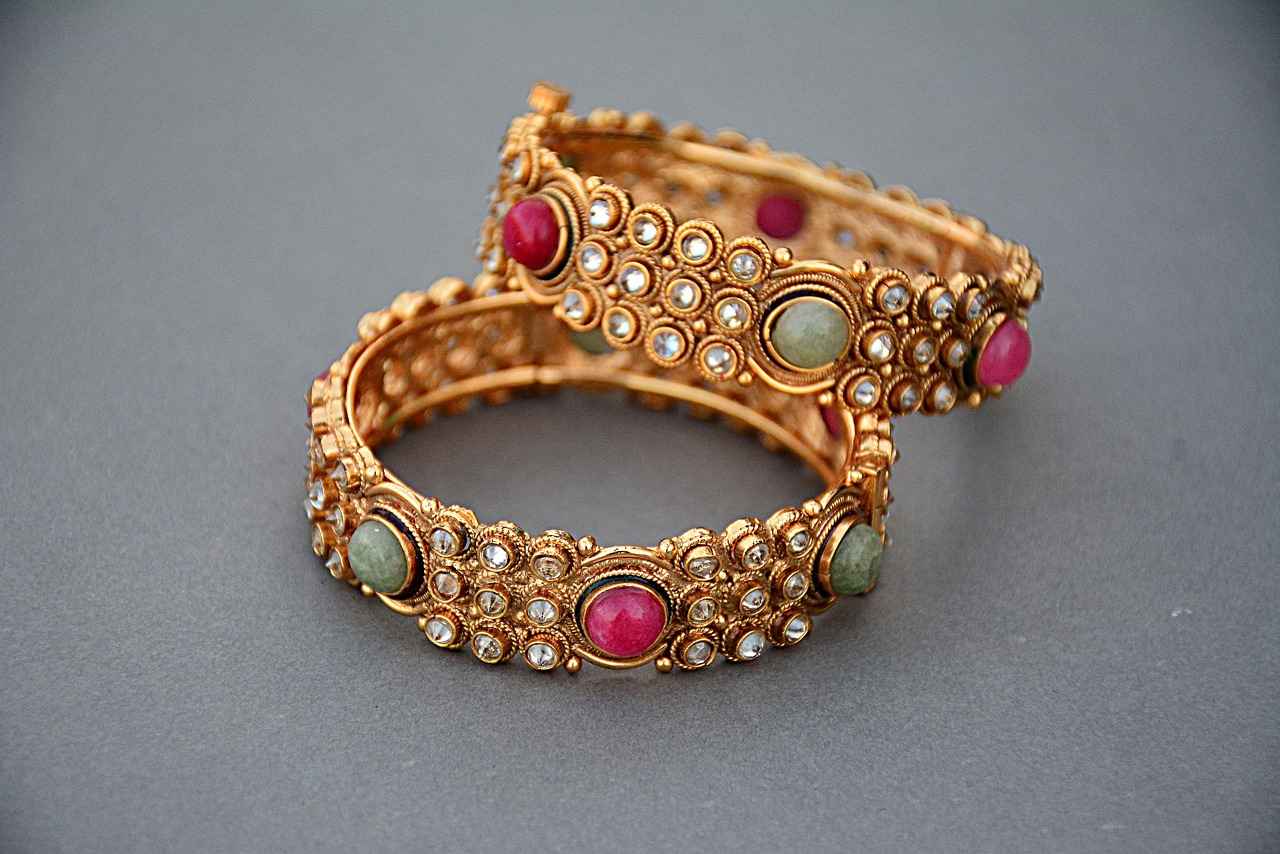
Where to Sell Your Jewelry for the Best Price?
When it comes to selling your jewelry, the platform you choose can make a significant difference in the price you receive. Understanding the various options available, both online and offline, is essential for maximizing your profits. Below, we explore the best avenues to sell your jewelry effectively.
Online platforms such as eBay, Etsy, and Facebook Marketplace provide access to a global audience. These platforms allow you to reach potential buyers who are specifically interested in jewelry, which can lead to better offers. Here are some advantages:
- Wider Reach: Your jewelry can be seen by thousands of potential buyers.
- Convenience: You can list your items from the comfort of your home.
- Competitive Pricing: The ability to compare prices helps you set a fair market value.
Local jewelers can provide an appealing option for those looking to sell quickly. They often offer immediate cash payments, which can be beneficial if you need funds urgently. However, it’s essential to consider the following:
- Personalized Service: Local jewelers can offer tailored advice and insights about your jewelry.
- Instant Transactions: Selling to a jeweler means you can walk away with cash in hand.
- Relationship Building: Establishing a relationship with a local jeweler can lead to better offers in the future.
If you own high-value pieces, consider selling through specialty auction houses. These venues attract serious collectors and can yield higher prices due to competitive bidding. Here’s what to keep in mind:
- Expert Evaluation: Auction houses often provide expert appraisals, ensuring your item is accurately valued.
- Targeted Audience: Auctions draw buyers specifically interested in unique and valuable items.
- Potential for High Returns: Competitive bidding can drive prices well above initial estimates.
Consignment shops offer another viable option, allowing you to display your jewelry while the shop takes a commission on the sale. This method can work well for high-quality pieces. Consider these factors:
- Professional Display: Your jewelry is showcased in a retail environment, enhancing its appeal.
- Less Hassle: The shop handles sales, marketing, and customer inquiries on your behalf.
- Longer Sales Time: Be prepared for the possibility of a longer sales process compared to direct selling.
Platforms like Instagram and Pinterest can be powerful tools for selling jewelry. By showcasing your pieces and engaging with followers, you can create a buzz around your items. Here’s how to optimize your social media sales:
- High-Quality Photos: Use visually appealing images to attract potential buyers.
- Engagement: Interact with your audience to build trust and increase interest.
- Direct Messaging: Utilize DMs for private sales and negotiations.
When deciding where to sell your jewelry, consider the following factors:
- Target Audience: Identify where potential buyers for your specific type of jewelry are likely to be.
- Fees and Commissions: Understand the costs associated with each platform, as they can impact your overall profit.
- Time and Effort: Assess how much time you are willing to invest in the selling process.
By carefully evaluating these options and understanding the nuances of each platform, you can effectively sell your jewelry for the best price possible.
Online Marketplaces vs. Local Jewelers
When it comes to selling your old jewelry, the choice between online marketplaces and local jewelers can significantly impact your selling experience and profit. Each option has its unique benefits and drawbacks, making it essential to weigh them carefully before making a decision.
Online marketplaces, such as eBay, Etsy, and specialized jewelry sites, provide access to a vast audience. This broad reach can be advantageous for sellers looking to attract buyers from various geographical locations. Here are some key benefits:
- Wider Audience: Online platforms allow you to showcase your jewelry to a global market, increasing the chances of finding interested buyers.
- Convenience: Selling online can be done from the comfort of your home, eliminating the need to travel to physical stores.
- Price Flexibility: You have more control over setting your prices and can adjust them based on market demand.
On the other hand, local jewelers offer a more personal selling experience. Here are some advantages of choosing this route:
- Immediate Cash Offers: Local jewelers can provide you with cash on the spot, making the selling process quick and efficient.
- Personalized Service: You can receive tailored advice and insights about your jewelry directly from experts.
- No Shipping Hassles: Selling locally eliminates the need for shipping, reducing the risk of damage or loss during transit.
Deciding whether to sell online or to a local jeweler depends on several factors:
- Urgency: If you need cash quickly, local jewelers may be the better option.
- Value of the Jewelry: For high-value pieces, online marketplaces may yield better prices due to increased competition among buyers.
- Condition of the Jewelry: If your jewelry is in excellent condition and has unique features, it may attract more buyers online.
If you decide to go the online route, consider these tips:
- High-Quality Photos: Invest time in taking clear, well-lit photos that showcase your jewelry from multiple angles.
- Detailed Descriptions: Provide accurate and detailed descriptions, including materials, size, and any unique features.
- Research Pricing: Look at similar items to gauge competitive pricing, ensuring you attract buyers without undervaluing your piece.
When selling to local jewelers, it’s important to:
- Get Multiple Quotes: Don’t settle for the first offer; visiting several jewelers can help you find the best price.
- Understand Their Expertise: Choose jewelers who specialize in the type of jewelry you are selling, as they may provide better offers.
- Prepare Your Jewelry: Clean your jewelry and bring any original packaging or documentation to enhance its appeal.
In summary, both online marketplaces and local jewelers offer distinct advantages for selling old jewelry. By understanding your priorities and the specific benefits of each option, you can make an informed decision that maximizes your return while ensuring a smooth selling process.
Specialty Auction Houses
play a pivotal role in the world of high-end jewelry sales. They serve as a bridge between sellers of valuable pieces and serious buyers who are willing to invest significantly in unique items. Understanding how these auction houses operate can greatly enhance your chances of achieving a favorable sale.
When it comes to selling high-value jewelry, specialty auction houses are often the preferred choice for many sellers. This is primarily due to their ability to attract a targeted audience of collectors and investors. Unlike general auction platforms, specialty houses focus on specific types of items, ensuring that your piece is presented to the right buyers.
The auction process can seem daunting, but understanding the steps involved can help you navigate it successfully. Typically, the process includes:
- Consignment: You submit your jewelry to the auction house for evaluation and consignment.
- Appraisal: Experts assess your piece to determine its market value, which will inform the starting bid.
- Marketing: The auction house promotes your jewelry to potential buyers through catalogs and online listings.
- Auction Day: Your piece is auctioned, and bids are placed until the highest bid is reached.
- Post-Auction: If your item sells, you receive payment minus the auction house’s commission.
One of the key advantages of using a specialty auction house is their expertise in the jewelry market. They often have established networks of collectors and investors, which can drive up demand for your piece. Additionally, they provide:
- Professional Marketing: High-quality photography and detailed descriptions that highlight the unique aspects of your jewelry.
- Expert Guidance: Assistance in setting a realistic reserve price to protect your investment.
- Transparency: Clear information about fees and commissions, so there are no surprises after the sale.
To maximize your sale, consider the following strategies:
- Timing: Research the auction calendar to choose a date when similar items are in demand.
- Condition: Ensure your jewelry is in the best possible condition. Cleaning and minor repairs can enhance its appeal.
- Documentation: Provide any certificates of authenticity or appraisals to establish credibility and value.
Many sellers harbor misconceptions about auction houses, which can deter them from utilizing this valuable resource. Some common myths include:
- High Fees: While auction houses do charge commissions, the potential for higher selling prices often outweighs these costs.
- Limited Audience: Specialty auction houses attract a global audience, increasing the chances of competitive bidding.
- Only for Rare Items: While they excel in selling rare pieces, auction houses can also effectively sell more common items if marketed well.
Utilizing specialty auction houses can significantly enhance your chances of selling high-value jewelry at a favorable price. By understanding the auction process, preparing your jewelry effectively, and leveraging the expertise of auction professionals, you can navigate this marketplace with confidence. Whether you’re a seasoned seller or a first-timer, the right auction house can make all the difference in achieving a successful sale.
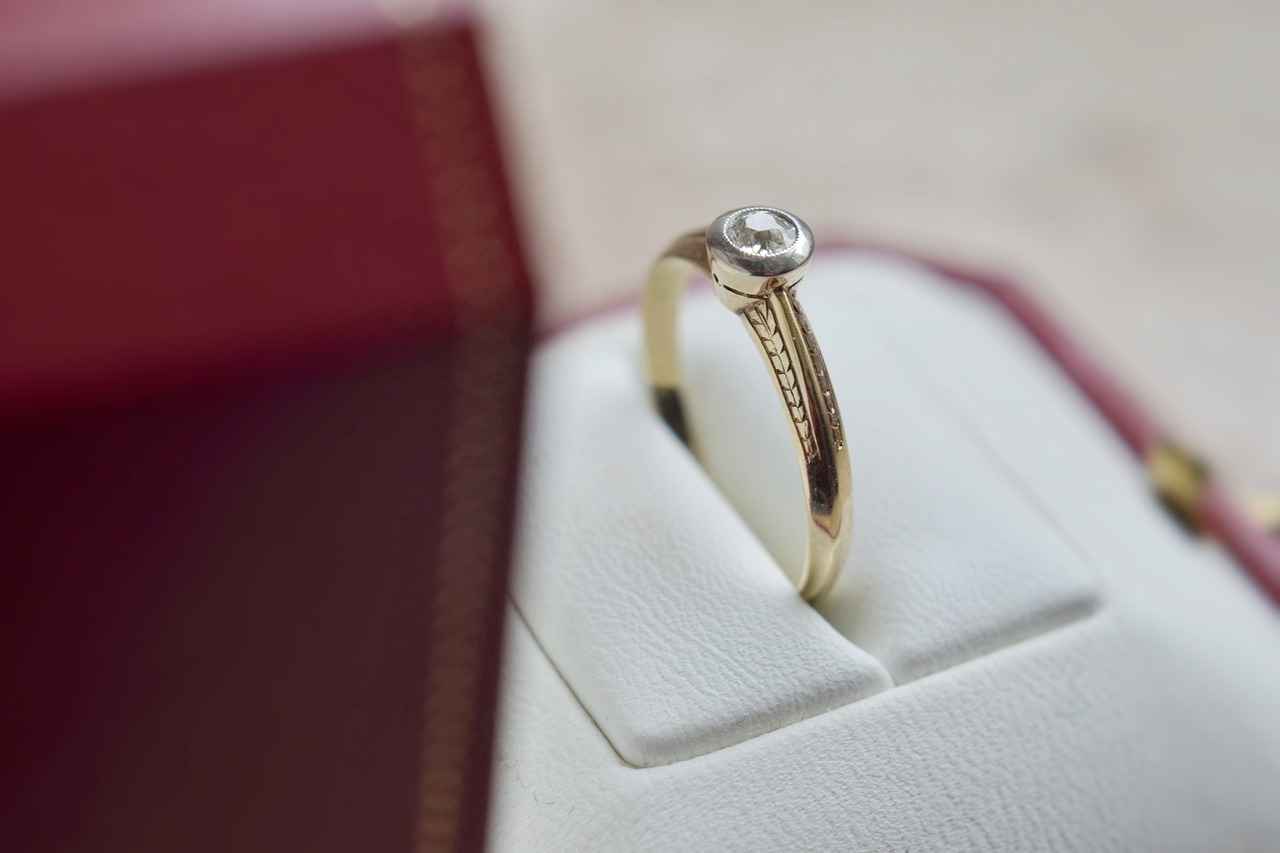
What to Consider When Selling Antique or Vintage Jewelry?
Selling antique or vintage jewelry requires careful consideration of various factors that can significantly impact the selling price. These unique pieces come with their own set of characteristics and market demands, making it essential for sellers to be well-informed. By understanding these aspects, you can navigate the selling process more effectively and achieve a better price for your treasured items.
Antique jewelry, defined as pieces that are over 100 years old, often carries historical significance and craftsmanship that can attract collectors. In contrast, vintage jewelry, typically aged between 20 to 100 years, reflects the design trends of its time. Both categories appeal to different buyer demographics, which can influence their market value.
The demand for antique and vintage jewelry fluctuates based on current trends, fashion influences, and cultural shifts. Researching market trends is crucial. For instance, certain styles, such as Art Deco or Victorian pieces, may see a surge in popularity, leading to increased prices. Keeping an eye on auction results and online sales can provide valuable insights into what buyers are currently seeking.
Before selling, it is essential to accurately assess your jewelry’s value. Factors to consider include:
- Material: Gold, silver, and platinum pieces often hold higher values due to their intrinsic worth.
- Brand: Recognized brands can significantly enhance a piece’s value.
- Condition: Well-maintained items are more desirable and fetch higher prices.
Obtaining a professional appraisal can be beneficial, especially for high-value items. Appraisers evaluate various aspects, including craftsmanship, historical significance, and current market demand. Expect a thorough examination that may include:
- Measurements and weight- Gemstone quality assessment- Overall condition and repair history
Choosing the right platform is crucial for maximizing your profits. Options include:
- Online Marketplaces: Websites like eBay and Etsy can reach a wider audience.
- Local Jewelers: They may provide immediate cash offers but could offer lower prices than online sales.
- Auction Houses: For high-value items, auction houses can attract serious buyers willing to bid competitively.
Proper preparation can enhance the appeal of your jewelry. Consider the following:
- Cleaning: Ensure your jewelry is clean and presentable. However, be cautious with delicate pieces; professional cleaning may be necessary.
- High-Quality Photos: When selling online, invest time in capturing clear, detailed images to attract potential buyers.
- Detailed Descriptions: Provide comprehensive information about the piece, including its history, materials, and any unique features.
Many sellers inadvertently make mistakes that can hinder their sales. Be aware of the following:
- Underestimating Value: Conduct thorough research to avoid selling your jewelry for less than its worth.
- Neglecting to Compare Offers: Always seek multiple quotes to ensure you get the best deal.
In summary, selling antique or vintage jewelry involves understanding the unique characteristics of the pieces, assessing their value, and choosing the right platforms for sale. By paying attention to market demands and preparing your jewelry effectively, you can maximize your profits while preserving the integrity of these timeless treasures.
Identifying Antique vs. Vintage Jewelry
When it comes to the world of jewelry, understanding the distinctions between antique and vintage pieces is crucial for both collectors and sellers alike. These classifications not only affect the aesthetic appreciation of the jewelry but also significantly influence its market value.
Antique jewelry is defined as pieces that are typically over 100 years old. These items often carry historical significance and are representative of the styles and craftsmanship of their respective eras. For example, Victorian, Edwardian, and Art Deco pieces are all considered antique. Because of their age and rarity, antique jewelry often commands higher prices in the market.
On the other hand, vintage jewelry refers to items that are at least 20 years old but less than 100 years old. Vintage pieces can include styles from the mid-20th century, such as those from the 1950s and 1960s. These items are often sought after for their unique designs and the nostalgia they evoke, though they typically do not reach the same price points as their antique counterparts.
Understanding the difference between antique and vintage jewelry is vital for several reasons:
- Value Assessment: Antique jewelry is generally valued higher due to its rarity and historical significance. Knowing this can help sellers set a more accurate price.
- Market Demand: Different markets may favor either antique or vintage items, affecting how quickly and profitably you can sell your jewelry.
- Condition and Restoration: The condition of antique pieces may require more careful restoration to maintain their integrity, while vintage items may be more forgiving in terms of wear and tear.
Identifying whether a piece is antique or vintage involves several considerations:
- Age: Check the manufacturing date, which can often be found through hallmarks or stamps on the jewelry.
- Style: Familiarize yourself with design elements characteristic of different eras. For example, Art Deco pieces typically feature geometric designs and bold colors.
- Materials: Antique jewelry may use materials and techniques that are no longer common, such as early plastics or specific types of gemstones.
Staying informed about market trends is essential for sellers. Antique jewelry often sees spikes in demand during certain periods, particularly among collectors and enthusiasts. Vintage jewelry, however, may experience fluctuating popularity based on current fashion trends. For instance, the resurgence of interest in retro styles has made vintage jewelry from the 1980s increasingly desirable.
In summary, knowing the differences between antique and vintage jewelry can greatly impact its value and your selling strategy. By understanding the definitions, market demand, and how to identify each type, you can make informed decisions that maximize your return on investment. Whether you are a seller or a collector, this knowledge is invaluable in navigating the intricate world of jewelry.
Market Trends for Antique Jewelry
In the world of antique jewelry, staying informed about market trends is not just beneficial; it is essential for maximizing your investment. The antique jewelry market is influenced by various factors, including consumer preferences, economic conditions, and emerging styles. Understanding these trends can significantly affect your decision on when and how to sell your pieces.
One of the most critical aspects of selling antique jewelry is timing. The demand for specific styles can fluctuate based on cultural shifts, fashion trends, and even celebrity endorsements. For instance, certain periods, such as the Art Deco era, may see a resurgence in popularity, leading to increased prices for pieces from that time. By keeping a close eye on these trends, you can strategically time your sale to take advantage of peak demand.
How Can You Stay Updated on Market Trends?
- Follow Industry Publications: Subscribing to jewelry magazines and online platforms dedicated to antique jewelry can provide valuable insights into current trends.
- Join Online Forums and Communities: Engaging with fellow collectors and sellers on platforms like Reddit or specialized forums can help you hear firsthand about what styles are gaining traction.
- Attend Auctions and Shows: Visiting antique shows and auctions can give you a sense of what styles are currently popular, as well as how much buyers are willing to pay.
The impact of market trends on selling prices cannot be overstated. For example, if you own a Victorian piece that is currently trending, you may be able to sell it for a significantly higher price than if you were to sell it during a period of lower demand. Conversely, if you wait too long and the trend shifts, you might find that your piece is worth much less.
Identifying Styles in Demand
Understanding which styles are currently in demand is crucial. For instance, Georgian and Edwardian jewelry may be sought after due to their intricate designs and historical significance. On the other hand, Mid-Century Modern pieces might appeal to a younger audience looking for unique and bold designs. Researching these styles and their current market appeal can help you make informed selling decisions.
Additionally, consider the materials used in your antique jewelry. Pieces made from platinum or featuring rare gemstones often fetch higher prices, especially when these materials are trending. Keeping abreast of the latest trends in materials can also guide your selling strategy.
Conclusion
In summary, staying updated on market trends is vital for anyone looking to sell antique jewelry. By understanding demand and timing your sale effectively, you can significantly enhance your selling price. Remember to leverage various resources, from publications to community insights, to ensure you are well-informed and ready to make the most of your antique jewelry investment.

How to Prepare Your Jewelry for Sale?
Properly preparing your jewelry for sale can significantly enhance its appeal and value. When you take the time to clean and present your pieces attractively, it can make a substantial difference in attracting potential buyers and achieving a better price.
Why is Cleaning Important?
Cleaning your jewelry not only improves its appearance but also demonstrates to buyers that you care for the item. A well-maintained piece is more likely to command a higher price. Here are some effective cleaning methods:
- Gentle Soap and Water: For most jewelry, a mixture of mild soap and warm water is sufficient. Use a soft brush to gently scrub the surfaces.
- Professional Cleaning: Delicate pieces, particularly those with gemstones, may benefit from professional cleaning to avoid damage.
- Ultrasonic Cleaners: These devices can effectively clean intricate designs but should be used with caution, especially on older or fragile items.
How to Restore Jewelry?
If your jewelry has scratches or tarnish, consider restoration techniques:
- Polishing: Use a polishing cloth specifically designed for jewelry to remove tarnish and restore shine.
- Repairing Settings: Ensure that stones are secure in their settings. Loose stones can deter buyers and reduce value.
Creating an Attractive Listing
When selling online, your listing is your first impression. A well-crafted listing can attract more buyers and lead to better offers:
- High-Quality Photos: Use natural lighting and multiple angles to showcase your jewelry. Close-ups can highlight intricate details.
- Detailed Descriptions: Clearly describe the materials, size, and any unique features. Include information about the item’s history if applicable.
- Keywords: Use relevant keywords in your listing to enhance visibility in search results. Terms like “vintage,” “gold,” or “handcrafted” can attract specific buyers.
Consider the Presentation
Presentation can significantly impact buyer perception. Consider the following:
- Jewelry Boxes: Displaying your items in a nice box or pouch can create a more luxurious feel.
- Styling: If possible, model the jewelry or use props to show how it can be worn.
What to Avoid When Preparing Jewelry for Sale?
While preparing your jewelry, be mindful of common mistakes that can diminish value:
- Over-Cleaning: Avoid harsh chemicals or abrasive materials that could damage your jewelry.
- Ignoring Repairs: Failing to fix broken clasps or loose stones can turn potential buyers away.
Final Touches
Before finalizing your sale, double-check the item for any last-minute touch-ups. A final polish and ensuring all components are in working order can make a world of difference in the eyes of potential buyers.
By taking the time to properly prepare your jewelry for sale, you’re not just cleaning and presenting it; you’re enhancing its value and appeal, ensuring you get the best return on your investment.
Cleaning and Restoring Jewelry
Jewelry is not just an accessory; it often holds sentimental value and can represent significant financial investments. Over time, however, dirt and tarnish can accumulate, diminishing its beauty. is essential for maintaining its appeal and ensuring it remains a cherished piece for years to come.
Regular cleaning not only enhances the appearance of your jewelry but also helps in identifying any potential issues, such as loose stones or damaged settings. A well-maintained piece can also fetch a higher price if you decide to sell it. Here are some reasons why cleaning is crucial:
- Improves Aesthetics: A clean piece sparkles and shines, making it more attractive.
- Prevents Damage: Dirt and grime can lead to corrosion or deterioration over time.
- Enhances Longevity: Regular maintenance can extend the life of your jewelry.
There are various methods to clean jewelry, but the approach you choose should depend on the type of material and the delicacy of the piece. Here are some effective cleaning methods:
- Soap and Water: For most metal jewelry, a solution of warm water and mild soap can do wonders. Soak the piece for a few minutes, then gently scrub with a soft brush.
- Ultrasonic Cleaners: These devices use high-frequency sound waves to remove dirt. However, they are not suitable for all types of jewelry, especially those with delicate stones.
- Professional Cleaning: For antique or intricate pieces, consider seeking professional help. Experts have the tools and knowledge to clean without causing damage.
Delicate pieces, such as those with pearls or soft gemstones, require extra care. Here are some tips:
- Avoid Harsh Chemicals: Stay away from bleach or abrasive cleaners, as they can damage soft stones and metals.
- Use a Soft Cloth: Instead of brushes, opt for a soft microfiber cloth to gently wipe the surface.
- Limit Water Exposure: For items like pearls, avoid soaking them in water. Instead, wipe them down with a damp cloth.
While DIY cleaning can be effective, certain situations call for professional intervention:
- Intricate Designs: If your jewelry has complex settings or multiple stones, a professional can ensure thorough cleaning without risk of damage.
- Antique Pieces: Older jewelry may have fragile components that require specialized care.
- Restoration Needs: If your piece is damaged or requires repairs, a jeweler can clean and restore it properly.
Once your jewelry is clean, maintaining its shine is essential. Here are some practical tips:
- Store Properly: Keep your jewelry in a soft pouch or a separate compartment to prevent scratching.
- Avoid Moisture: Remove jewelry before swimming or showering to prevent tarnishing.
- Regular Checks: Periodically inspect your pieces for any signs of wear or loose stones.
In conclusion, caring for your jewelry through proper cleaning and maintenance is vital for preserving its beauty and value. Whether you choose to clean it yourself or seek professional help, taking the time to maintain your pieces will ensure they continue to shine brightly for years to come.
Creating an Attractive Listing
When it comes to selling jewelry online, the presentation of your items is crucial. A well-crafted listing can significantly influence potential buyers, enticing them to consider your jewelry over others. Here are some key elements to keep in mind when creating an attractive listing.
High-quality photos are the first impression buyers will have of your jewelry. Poor images can misrepresent the item and deter potential customers. Here are some tips for capturing the best photos:
- Use Natural Lighting: Natural light enhances the true colors and details of your jewelry.
- Multiple Angles: Provide images from various angles to give buyers a comprehensive view.
- Close-Ups: Highlight intricate details and any gemstones to showcase craftsmanship.
A clear and detailed description is just as important as the photos. It should include:
- Material Information: Specify the type of metal and any gemstones involved.
- Size and Weight: Provide exact measurements, as this helps buyers assess fit and value.
- Condition: Be honest about any wear and tear, as transparency builds trust.
Utilizing relevant keywords in your listing can enhance visibility in search results. Consider including:
- Type of Jewelry: E.g., rings, necklaces, bracelets.
- Style: Vintage, contemporary, or handmade.
- Brand Names: If applicable, mention any designer or notable brands.
Pricing your jewelry appropriately is crucial for attracting buyers while ensuring you don’t undervalue your piece. Research similar items and consider the following:
- Market Value: Use online platforms to gauge what similar pieces are selling for.
- Appraisal Value: If you have an appraisal, use it as a baseline for your pricing.
Offering a return policy can make your listing more appealing. It provides buyers with confidence in their purchase, knowing they can return the item if it doesn’t meet their expectations. Consider a reasonable return window and clearly outline your return policy in the listing.
Once your listing is live, promoting it can further increase visibility. Here are some effective strategies:
- Social Media Sharing: Share your listing on platforms like Instagram and Facebook to reach a wider audience.
- Engage with Potential Buyers: Respond to inquiries promptly and engage with comments to build rapport.
In conclusion, creating an attractive listing for your jewelry involves a combination of high-quality images, detailed descriptions, strategic keywords, and effective pricing. By paying attention to these elements, you can enhance your chances of attracting more buyers and securing better offers.
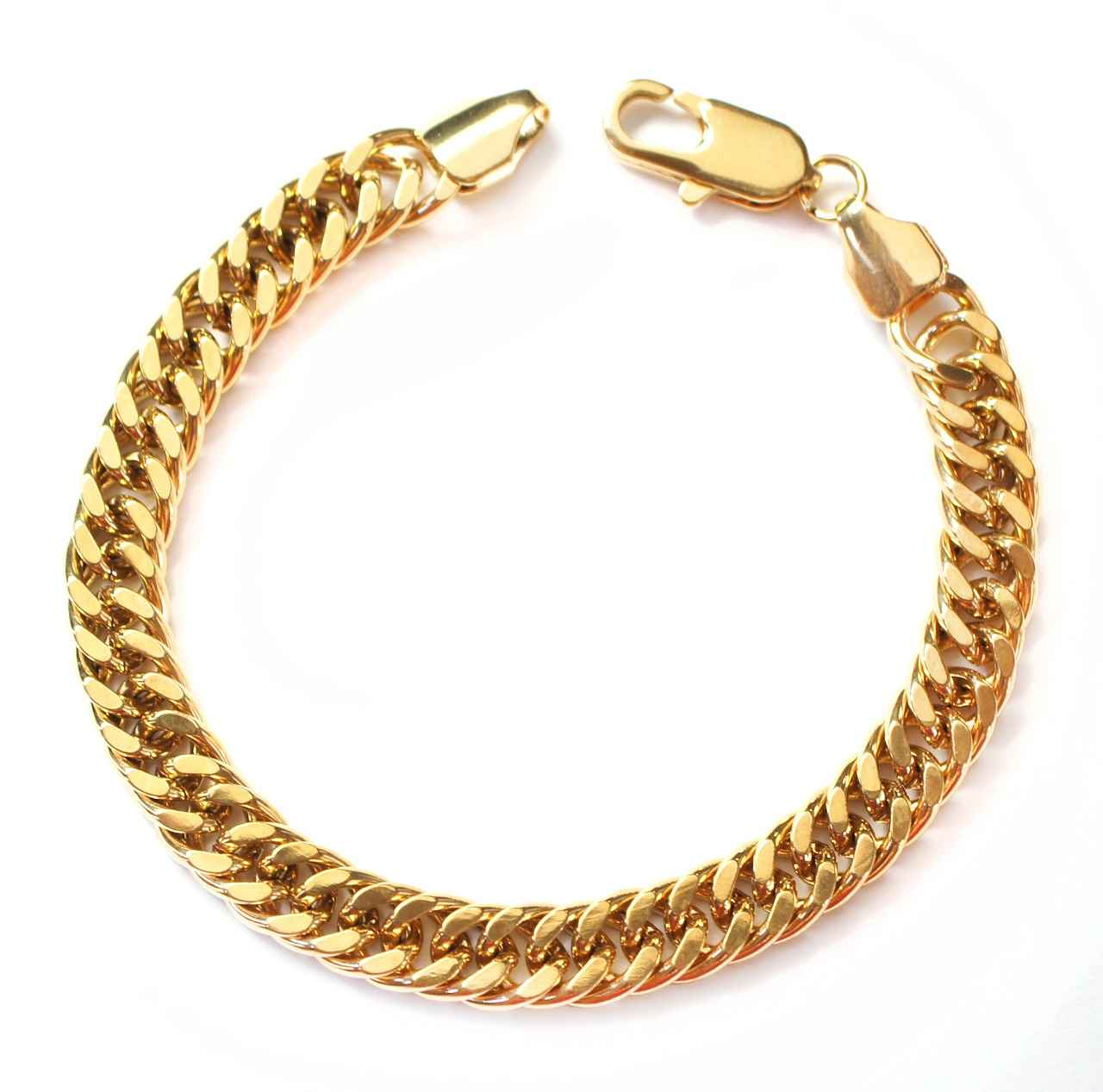
What Are Common Mistakes to Avoid When Selling Jewelry?
When it comes to selling jewelry, being aware of common pitfalls can significantly enhance your experience and outcomes. Many sellers unknowingly make mistakes that can lead to reduced profits or unsatisfactory sales. By understanding these common errors, you can navigate the selling process more effectively and ensure that you receive fair compensation for your items.
- Underestimating Your Jewelry’s Value: Many individuals undervalue their jewelry, often due to a lack of knowledge about the market. This can lead to accepting lower offers than what the piece is genuinely worth. It’s crucial to conduct thorough research or seek professional appraisals to understand the true value of your jewelry.
- Neglecting to Compare Offers: One of the biggest mistakes is not comparing offers from various buyers. Each buyer may have different pricing strategies, and failing to seek multiple quotes can result in missing out on better deals. Always take the time to shop around and negotiate to ensure you get the best price.
- Ignoring the Condition of Your Jewelry: The condition of your jewelry plays a significant role in its value. Sellers often overlook the importance of cleaning and restoring their pieces before selling. A well-maintained item can fetch a higher price, so consider professional cleaning for delicate pieces to enhance their appeal.
- Rushing the Selling Process: In a hurry to sell, many individuals may not take the necessary time to prepare their jewelry properly or to understand the selling process. This haste can lead to poor decisions, such as accepting the first offer without evaluating other options. Take your time to ensure you understand the market and your piece’s worth.
- Failing to Document the History: Providing potential buyers with a documented history of the jewelry can significantly impact its appeal. This includes any appraisals, purchase receipts, or details about the craftsmanship. Buyers are often willing to pay more for pieces with a verified history.
- Not Understanding the Market: Jewelry trends can fluctuate, and what’s in demand today may not be tomorrow. Sellers should stay informed about market trends and understand when to sell their pieces for the best return. Timing can be just as important as the quality of the jewelry itself.
- Overlooking Online Selling Platforms: In today’s digital age, many sellers underestimate the potential of online marketplaces. While local jewelers can provide immediate cash offers, online platforms often reach a broader audience and can yield higher prices. Explore various avenues, including social media, auction sites, and specialized jewelry selling platforms.
By avoiding these common mistakes, you can significantly improve your chances of achieving a successful sale. Remember, preparation is key. Take the time to research, clean, and present your jewelry properly, and always compare offers to ensure you are getting the best deal possible.
Underestimating Your Jewelry’s Value
When it comes to selling jewelry, many individuals find themselves in a precarious position, often leading to the underestimation of their jewelry’s value. This common mistake can result in significantly lower offers than what the pieces are truly worth. Understanding the true value of your jewelry is crucial for maximizing your returns. In this section, we will delve into the reasons why sellers undervalue their jewelry and provide essential tips for accurate valuation.
Several factors contribute to sellers undervaluing their jewelry:
- Lack of Knowledge: Many sellers are not aware of the current market trends or the intrinsic value of their pieces.
- Emotional Attachment: Sentimental value can cloud judgment, leading sellers to believe their jewelry is worth less than its market value.
- Misunderstanding Appraisals: Some sellers may not fully understand the appraisal process, resulting in misinformed value assessments.
Before selling your jewelry, it is essential to conduct thorough research to understand its true worth. Here are some steps to help you:
- Research Similar Items: Look for comparable pieces online to gauge current market prices.
- Consult Professional Appraisers: Seek out certified appraisers who can provide a detailed evaluation based on various factors such as materials, craftsmanship, and market demand.
- Utilize Online Valuation Tools: Websites and tools are available that can help you estimate your jewelry’s value based on its characteristics.
Understanding what affects your jewelry’s value is essential. Consider the following:
- Material: The type of metal (gold, silver, platinum) and the quality of gemstones significantly impact value.
- Brand and Designer: Well-known brands or designers often command higher prices.
- Condition: The overall condition of the piece, including any wear and tear, plays a crucial role in its worth.
Getting a professional appraisal can provide a clear understanding of your jewelry’s market value. During an appraisal, expect a thorough examination of your piece, including:
- Measurements and Weight: Accurate measurements and weight are crucial for determining metal and gemstone values.
- Gemstone Quality: The quality of gemstones, including cut, clarity, color, and carat weight, will influence the overall valuation.
To ensure you do not undervalue your jewelry, avoid these common pitfalls:
- Skipping Research: Failing to research similar items can lead to incorrect assumptions about value.
- Ignoring Professional Opinions: Underestimating the importance of a professional appraisal can result in significant financial loss.
- Rushing the Sale: Taking the time to understand your jewelry’s worth can lead to better offers.
In conclusion, understanding the true value of your jewelry is essential in the selling process. By conducting thorough research, consulting professionals, and avoiding common mistakes, you can ensure that you receive the best possible return on your investment. Remember, taking the time to assess your jewelry accurately can make all the difference in achieving a successful sale.
Neglecting to Compare Offers
When it comes to selling your jewelry, one of the most critical steps is ensuring that you receive the best possible offer. from various buyers can lead to significant financial losses, as you may miss out on opportunities for higher sales. In this section, we will explore the importance of obtaining multiple quotes and how it can enhance your selling experience.
In the competitive market of jewelry sales, comparing offers is not just a recommendation; it is a necessity. Buyers vary in their willingness to pay based on factors such as market demand, their own inventory needs, and the specific characteristics of the jewelry piece in question. By seeking multiple quotes, you can:
- Identify the Best Price: Different buyers may value your jewelry differently. Some may offer higher prices based on their target market or sales strategy.
- Gain Insight into Market Trends: By collecting offers from various sources, you can better understand current market trends and how they may affect your jewelry’s value.
- Enhance Negotiation Power: Having multiple offers gives you leverage in negotiations. You can use competing offers to your advantage when discussing price with potential buyers.
To make the most of your comparison process, follow these practical steps:
- Research Potential Buyers: Start by identifying various buyers, including local jewelers, online marketplaces, and auction houses. Each has its own unique advantages.
- Request Detailed Quotes: When soliciting quotes, ask for detailed breakdowns of the offer. This should include the pricing rationale, as well as any fees or commissions that may apply.
- Evaluate the Reputation of Buyers: Don’t just focus on the price. Consider the buyer’s reputation and customer reviews. A higher offer from a less reputable buyer may not be worth the risk.
Failing to compare offers can lead to several risks, including:
- Underpricing Your Jewelry: Without a thorough comparison, you may accept an offer that is significantly lower than the market value.
- Missed Opportunities: Some buyers may be willing to pay a premium for specific pieces, and not exploring these options can result in lost income.
- Informed Selling Decisions: By neglecting to compare, you miss out on valuable information that can aid in making informed decisions regarding your sale.
To ensure you get the best deal when selling your jewelry, consider the following tips:
- Prepare Your Jewelry: Clean and present your jewelry well to attract higher offers.
- Know Your Jewelry’s Value: Have a clear understanding of your piece’s worth based on appraisals and market research.
- Be Patient: Don’t rush into a sale. Take your time to compare offers and choose the best option.
In conclusion, when selling your jewelry can lead to missed opportunities and lower returns. By actively seeking multiple quotes, you not only enhance your chances of getting a better price but also empower yourself with knowledge about the market. Take the time to research, compare, and negotiate to ensure that you receive the best possible deal for your valuable pieces.
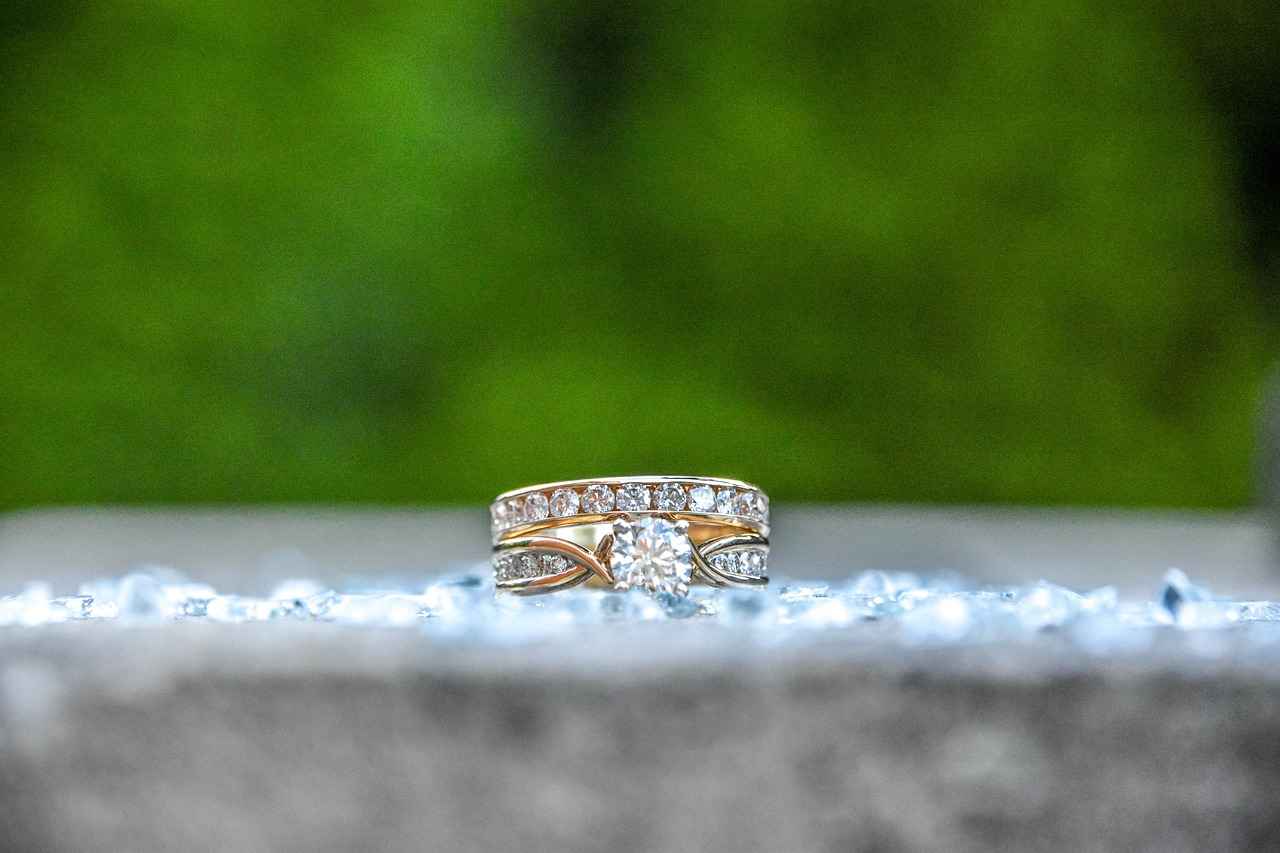
How to Handle Negotiations When Selling Jewelry?
When it comes to selling jewelry, negotiation skills are not just beneficial; they are essential. Mastering the art of negotiation can significantly influence the sale price you achieve for your items. Understanding the nuances of effective negotiation can lead to better outcomes, ensuring that you receive a fair value for your treasured pieces.
Negotiation is a critical component of the selling process. It allows you to advocate for your jewelry’s worth and navigate offers from potential buyers. Effective negotiation can mean the difference between a satisfactory sale and one that leaves you feeling undervalued. Here are some key reasons why these skills are vital:
- Maximizing Profit: Skilled negotiators often achieve higher sale prices.
- Building Relationships: Good negotiation fosters trust and rapport with buyers.
- Understanding Market Trends: Negotiators who are informed about market conditions can leverage this knowledge in discussions.
To negotiate effectively, consider employing the following strategies:
- Do Your Research: Understand the market value of your jewelry. Research similar items and their selling prices to establish a solid baseline.
- Set a Minimum Acceptable Price: Before negotiations begin, determine the lowest price you are willing to accept. This will help you stay focused and prevent you from agreeing to a deal that is not in your best interest.
- Practice Active Listening: Pay attention to what the buyer is saying. Understanding their perspective can help you find common ground and facilitate a smoother negotiation process.
- Be Prepared to Walk Away: If the offers do not meet your expectations, be willing to walk away. This demonstrates confidence and can sometimes lead to better offers.
Approaching buyers effectively can enhance your negotiation outcomes. Here are some tips:
- Maintain a Positive Attitude: A friendly demeanor can make buyers more receptive to your proposals.
- Be Transparent: Clearly communicate the reasons behind your asking price. Transparency can build trust and encourage buyers to see the value in your jewelry.
- Use Silence to Your Advantage: After stating your price, allow for silence. This can prompt the buyer to make the next move.
To ensure a successful negotiation, be mindful of common pitfalls:
- Underestimating Your Jewelry’s Value: Many sellers make the mistake of undervaluing their items. Ensure you have a clear understanding of your jewelry’s worth before entering negotiations.
- Failing to Prepare: Going into negotiations without adequate research can leave you vulnerable to low offers.
- Being Too Rigid: While it’s important to have a minimum price, being overly inflexible can deter potential buyers. Consider reasonable offers and be open to negotiation.
Once you’ve reached an agreement, closing the deal effectively is crucial:
- Confirm Details in Writing: Ensure that all terms of the sale are documented, including price, payment method, and any warranties or guarantees.
- Express Gratitude: Thank the buyer for their interest and business. A positive closing can enhance your reputation for future sales.
In summary, honing your negotiation skills can significantly impact the success of your jewelry sales. By preparing adequately, understanding your jewelry’s value, and approaching negotiations with confidence and flexibility, you can achieve outcomes that reflect the true worth of your items.
Setting a Minimum Acceptable Price
When it comes to selling your jewelry, one of the most critical steps is determining your minimum acceptable price. This figure is the least amount you are willing to accept for your piece, ensuring that you do not sell it for less than its true worth. Understanding this concept not only helps you maintain focus during negotiations but also empowers you to make informed decisions throughout the selling process.
Establishing a minimum acceptable price is essential for several reasons:
- Protects Your Investment: Jewelry can represent a significant financial investment. By knowing your minimum price, you ensure that you do not incur a loss.
- Enhances Negotiation Power: Having a clear price in mind allows you to negotiate confidently, giving you leverage in discussions with potential buyers.
- Reduces Emotional Stress: Selling jewelry can be an emotional experience. A predetermined price helps mitigate anxiety by providing a clear guideline for your negotiations.
Calculating your minimum acceptable price involves several steps:
- Research Market Value: Conduct thorough research on similar pieces to understand the current market trends. Look at online marketplaces, auction results, and local jewelers to gather data.
- Assess Condition and Quality: Evaluate your jewelry’s condition, including any wear, damage, or missing components. High-quality pieces often command higher prices.
- Consider Sentimental Value: While sentimental value does not directly translate to monetary worth, it can influence your minimum price. Decide how much this value impacts your willingness to sell.
- Include Selling Costs: Factor in any fees associated with selling, such as commissions or listing fees, to ensure your minimum price covers these costs.
Once you’ve established your minimum acceptable price, it’s time to enter negotiations. Here are some effective strategies:
- Stay Firm but Flexible: While you should be firm about your minimum price, being open to reasonable offers can facilitate smoother negotiations.
- Provide Justification: When discussing price, be prepared to explain your reasoning. Share your research and insights to validate your pricing.
- Be Prepared to Walk Away: If negotiations do not meet your minimum price, be willing to walk away. This stance can sometimes encourage buyers to reconsider their offers.
To maximize your selling potential, avoid these common pitfalls:
- Underestimating Value: Many sellers make the mistake of undervaluing their jewelry. Conduct thorough research to ensure you understand its true worth.
- Ignoring Market Trends: Failing to keep up with market trends can lead to mispricing. Stay informed about what buyers are looking for and adjust your minimum price accordingly.
- Setting Prices Too High: While it’s essential to protect your investment, setting an unrealistically high price can deter potential buyers. Find a balance that reflects both value and market demand.
In summary, setting a minimum acceptable price is a crucial step in the jewelry selling process. It not only protects your investment but also enhances your negotiation power and reduces emotional stress. By conducting thorough research, assessing your piece’s condition, and employing effective negotiation strategies, you can ensure a successful sale that meets your financial expectations.
Being Open to Offers
When it comes to selling jewelry, the negotiation process can be just as important as the initial valuation. can significantly enhance your chances of achieving a successful sale. While it is essential to set a minimum price that reflects the value of your jewelry, being flexible can create opportunities for both you and the buyer.
Many sellers make the mistake of adhering too rigidly to their asking price. This can limit potential buyers and stall negotiations. Instead, consider the following strategies:
- Understand Market Demand: Research current trends and market demand for your specific piece. This knowledge can help you gauge how much flexibility you should have in your pricing.
- Encourage Dialogue: Open communication with potential buyers can lead to better offers. Ask questions and listen to their needs and concerns, which can help you find common ground.
- Evaluate Offers Fairly: When you receive an offer, assess it based on your research and the jewelry’s condition. If the offer is reasonable, consider accepting it or making a counteroffer.
- Be Prepared to Walk Away: If negotiations do not meet your minimum price, be willing to decline. This can sometimes prompt buyers to reconsider their offers.
Moreover, being open to offers does not mean you should undervalue your jewelry. It is about finding a balance between your expectations and the buyer’s willingness to pay. Consider setting a range rather than a fixed price. For example, if your minimum acceptable price is $500, you might list your jewelry for $600, allowing room for negotiation.
Another important aspect to consider is the emotional value of your jewelry. While it may hold sentimental significance, it is crucial to separate emotions from the selling process. Buyers are often looking for a deal, and your attachment to the piece may cloud your judgment in negotiations.
In addition, consider the timing of your sale. Certain seasons or events can influence demand. For instance, selling jewelry around holidays or special occasions can attract more buyers, potentially leading to higher offers. Keeping an eye on these trends can enhance your negotiation strategy.
Utilizing online platforms can also expand your reach and provide more opportunities for negotiations. Many online marketplaces allow you to set a price while still enabling buyers to make offers. This flexibility can lead to successful sales that satisfy both parties.
In conclusion, while having a minimum price is essential, being open to reasonable offers can facilitate negotiations and lead to a successful sale. By understanding the market, encouraging dialogue, and evaluating offers fairly, you can enhance your chances of achieving a satisfactory outcome. Remember, the goal is to find a price that works for both you and the buyer, ensuring a positive selling experience.
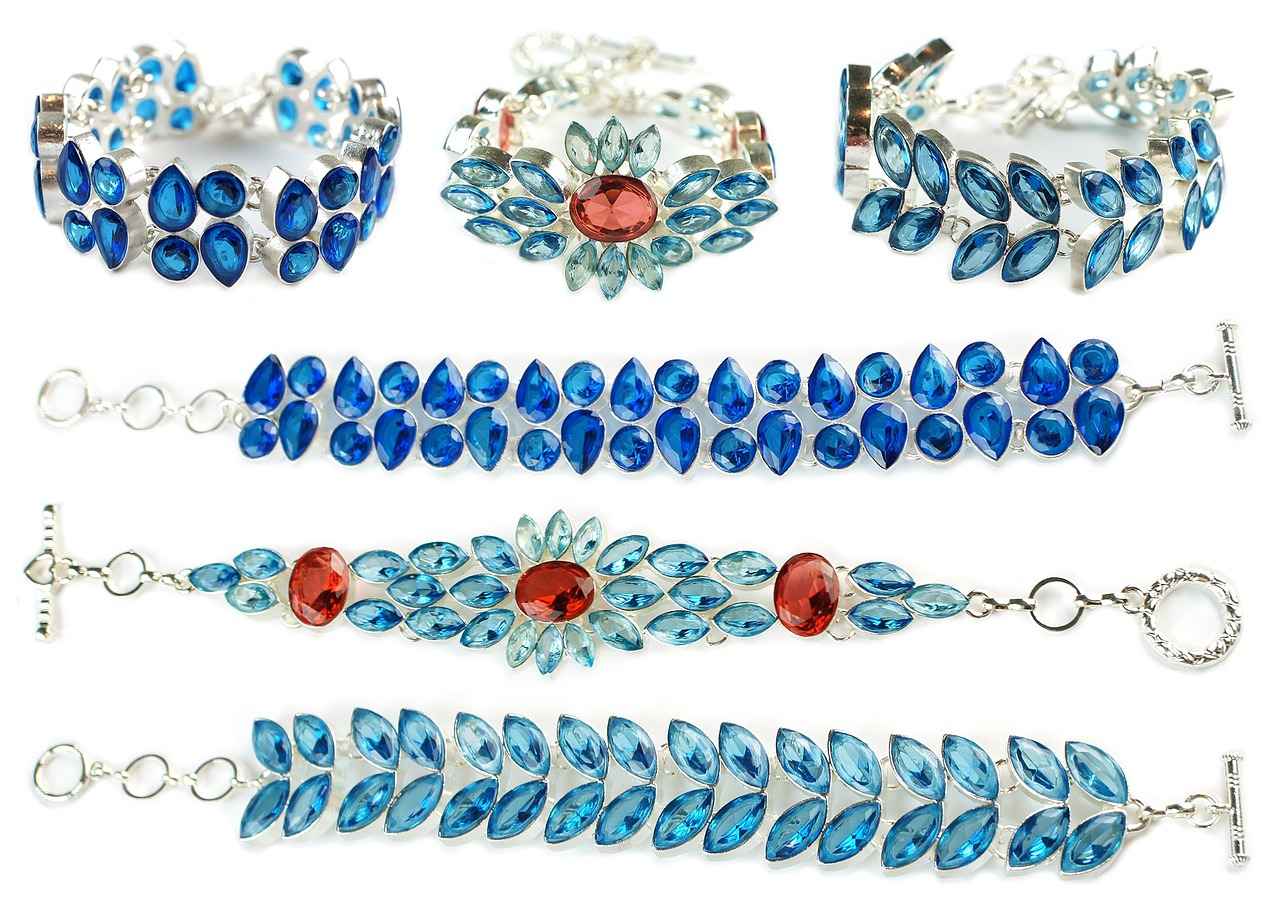
What Are the Tax Implications of Selling Jewelry?
When it comes to selling jewelry, understanding the tax implications is crucial for both compliance and effective financial planning. Jewelry, often considered a valuable asset, can lead to unexpected tax liabilities if not properly managed. Here, we will delve into the various tax considerations that come into play when selling jewelry, ensuring you are well-informed and prepared.
When you decide to sell your jewelry, you may encounter several tax-related issues that vary depending on your location, the sale amount, and the nature of the transaction. Being aware of these factors can help you avoid potential pitfalls.
If you sell your jewelry for more than you initially paid, you may be subject to capital gains tax. This tax is applied to the profit made from the sale, and the rate can vary based on how long you’ve owned the piece. If you owned the jewelry for more than one year, it may qualify for long-term capital gains rates, which are generally lower than short-term rates.
Determining the fair market value of your jewelry at the time of sale is essential. This value is what a willing buyer would pay and a willing seller would accept under normal circumstances. Accurately assessing this value can help you calculate any capital gains accurately, should they apply.
Maintaining detailed records of your jewelry sales is vital for tax reporting purposes. Keep track of:
- The purchase price of the jewelry
- The sale price
- Any appraisals or valuations
- Documentation of the sale (receipts, invoices)
This information will be invaluable when filing your taxes and can help substantiate your claims in case of an audit.
In some jurisdictions, you may also need to consider sales tax when selling jewelry. If you are selling through a business or as part of a regular trade, you may be required to collect sales tax from the buyer. It’s important to understand local regulations regarding this aspect to ensure compliance.
Another important consideration is whether the jewelry was a gift or purchased. If you received the jewelry as a gift and later sell it, you typically do not owe capital gains tax on the appreciation in value that occurred while it was in the possession of the giver. However, the original purchase price may still be relevant for calculating your own gains.
Tax laws can vary significantly by state and country, so it’s crucial to familiarize yourself with the specific regulations that apply to your situation. Some states may have exemptions or specific rules regarding the sale of personal property, including jewelry.
Given the complexities surrounding tax implications when selling jewelry, consulting a tax professional can be beneficial. They can provide personalized advice based on your circumstances, ensuring that you are compliant with all applicable tax laws and helping you maximize your financial outcome.
In summary, understanding the tax implications of selling jewelry is essential for compliance and effective financial planning. By being informed about capital gains taxes, fair market value, and local regulations, you can navigate the selling process more confidently and avoid potential tax liabilities.
Capital Gains Tax Considerations
When it comes to selling jewelry, understanding the financial implications is crucial. One significant aspect that sellers often overlook is the capital gains tax. If you sell jewelry for a profit, you may be subject to this tax, which can impact your overall earnings. Therefore, being well-informed about the rules and rates associated with capital gains tax can help you prepare for any potential tax liabilities.
Capital gains tax is a tax on the profit made from selling an asset, such as jewelry. The profit is calculated as the difference between the selling price and the original purchase price. In many jurisdictions, if you sell your jewelry for more than you paid for it, the profit becomes taxable income.
The calculation of capital gains tax can vary based on several factors:
- Holding Period: The length of time you held the jewelry before selling it can affect the tax rate. Generally, assets held for over a year may qualify for a lower tax rate.
- Tax Bracket: Your overall income level determines your tax bracket, which in turn influences the capital gains tax rate.
- Exemptions and Deductions: Some jurisdictions offer exemptions or deductions that can reduce your taxable gain.
Capital gains tax rates can vary significantly depending on your location. In the United States, for example, long-term capital gains are typically taxed at rates of 0%, 15%, or 20%, depending on your income level. Short-term gains, on the other hand, are usually taxed at your ordinary income tax rate, which can be significantly higher.
Maintaining detailed records of your jewelry sales is essential for accurate tax reporting. This includes:
- Purchase Receipts: Keep all receipts that detail the original purchase price of your jewelry.
- Sale Documentation: Document the sale price and any associated costs, such as appraisal fees or selling commissions.
- Appraisals: Having a professional appraisal can help establish the fair market value of your jewelry, which can be beneficial for tax purposes.
Before you decide to sell your jewelry, it’s wise to:
- Consult a tax professional to understand your specific tax obligations.
- Consider getting an appraisal to know the current market value.
- Research the best selling platforms to maximize your profit.
In some cases, there may be exceptions to capital gains tax. For example, if the jewelry is considered a personal item and sold for less than a certain amount, it may not be subject to taxation. However, it’s essential to check the specific regulations in your jurisdiction.
In summary, understanding the capital gains tax implications of selling jewelry is vital for ensuring you keep as much of your profit as possible. By staying informed and keeping accurate records, you can navigate the complexities of tax liabilities with confidence.
Record Keeping for Jewelry Sales
When it comes to selling jewelry, maintaining meticulous records is not just a good practice; it’s a necessity. Keeping detailed records of your jewelry sales, including appraisals and sale prices, is essential for tax reporting and future reference. This practice ensures that you are prepared for any financial obligations and can track the history of your transactions effectively.
Proper record keeping serves multiple purposes. Firstly, it helps you keep track of your jewelry’s valuation over time. By documenting appraisals, you can monitor how the market value of your pieces fluctuates. Secondly, in the event of a sale, having a clear record of your jewelry’s purchase price and appraised value can assist in ensuring you receive a fair offer.
- Purchase Details: Record the original purchase price, date of purchase, and any relevant receipts.
- Appraisal Information: Keep copies of professional appraisals, including the appraiser’s credentials and the date of appraisal.
- Sale Records: Document the sale price, buyer details, and the date of sale.
- Condition Reports: Note the condition of the jewelry at the time of appraisal and sale, as this can affect its value.
Organization is key to effective record keeping. Here are some practical tips:
- Digital Storage: Use cloud storage or dedicated software to keep your records safe and easily accessible.
- Physical Copies: Maintain a binder or file for hard copies of important documents, ensuring they are stored in a safe place.
- Regular Updates: Make it a habit to update your records after every transaction to avoid any lapses.
Understanding the tax implications of your jewelry sales is crucial. If you sell a piece for more than you purchased it, you may be subject to capital gains tax. Documenting your purchase price and sale price helps in calculating any potential tax liabilities accurately.
When tax season arrives, having your records organized can save you time and stress. Here’s how to prepare:
- Compile Sales Data: Gather all sales records, including appraisals and receipts.
- Calculate Gains: For each sale, calculate your capital gains by subtracting the purchase price from the sale price.
- Consult a Tax Professional: If you’re unsure about your tax obligations, seek advice from a tax professional who can guide you based on your specific situation.
Beyond tax purposes, keeping detailed records serves as a valuable reference for future sales. If you decide to sell your jewelry again or pass it down to family members, having a comprehensive history of each piece can enhance its perceived value. Buyers are often more willing to pay a premium for items with documented provenance.
In conclusion, diligent record keeping is a fundamental aspect of selling jewelry. It not only aids in tax compliance but also protects your investment and preserves the value of your cherished pieces. By following these guidelines, you can ensure that your jewelry sales are conducted smoothly and profitably.
Frequently Asked Questions
- What are the best ways to sell old jewelry?
There are several effective avenues to consider when selling old jewelry. You can explore online marketplaces like eBay or Etsy, local jewelers, or even specialty auction houses. Each option has its pros and cons, so it’s essential to choose one that aligns with your needs and expectations.
- How can I assess the value of my jewelry?
To accurately assess your jewelry’s value, consider getting a professional appraisal. Appraisers will evaluate factors like the material, brand, craftsmanship, and market demand. If a professional appraisal isn’t feasible, you can also research similar items online or use DIY valuation tools.
- What should I do to prepare my jewelry for sale?
Preparing your jewelry for sale is crucial to enhance its appeal. Start by cleaning your pieces carefully, and consider professional cleaning for delicate items. Additionally, when selling online, create an attractive listing with high-quality photos and detailed descriptions to catch potential buyers’ attention.
- What common mistakes should I avoid when selling jewelry?
One common mistake is underestimating your jewelry’s value, which can lead to lower offers. Always conduct thorough research to understand its worth. Another pitfall is neglecting to compare offers from different buyers; getting multiple quotes can help ensure you get the best deal possible.
- Are there tax implications when selling jewelry?
Yes, selling jewelry can have tax implications, especially if you make a profit. You may be subject to capital gains tax, depending on your location and the sale amount. It’s essential to keep detailed records of your sales, including appraisals and sale prices, for accurate tax reporting.
